Apple Vision Pro early review: a peek into the future of computing
New computing paradigms don't arrive often, and so far most have been passing fads. Apple Vision Pro may just withstand the test of time as a new way to experience software.
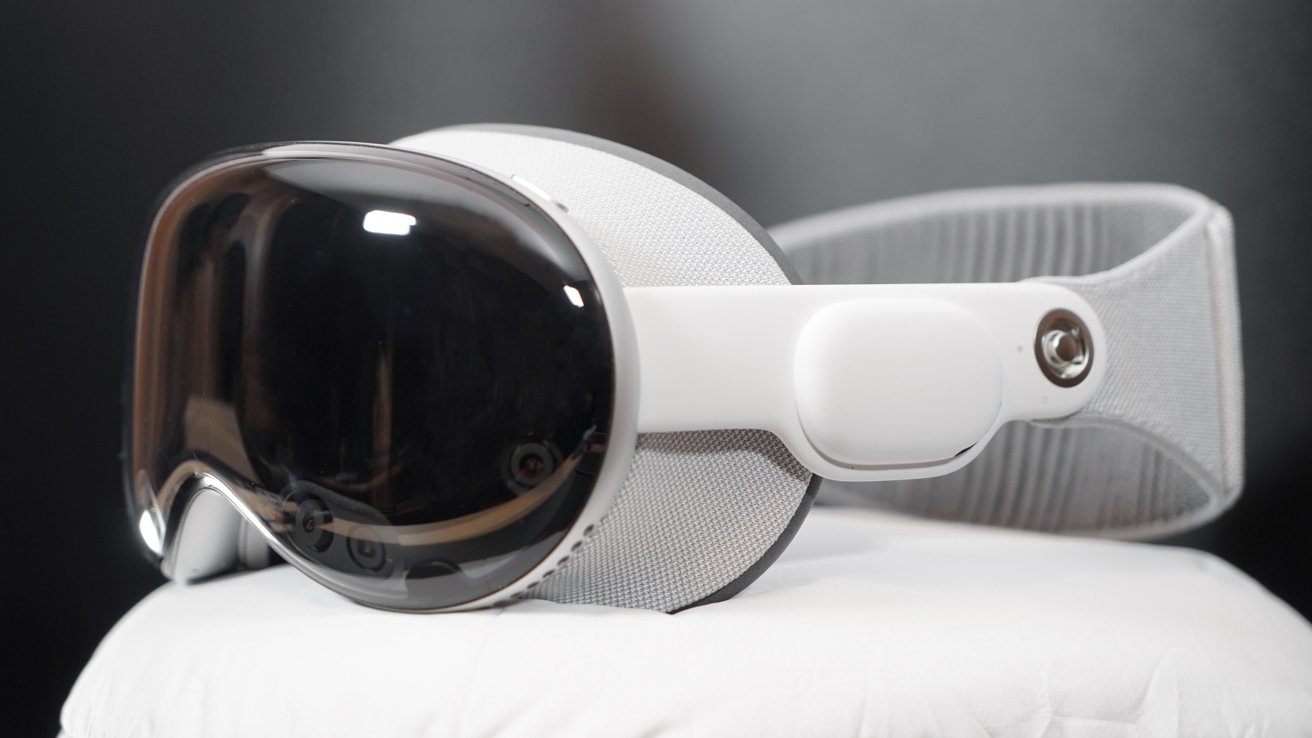
Apple Vision Pro review
Let's get this out of the way at the top -- Apple Vision Pro is expensive and certainly not for everyone. I'm not going to tell you Apple Vision Pro will change your life and everyone needs to buy it.
I will say that Apple Vision Pro, today, feels like a preview of what the future will be, even if it takes a decade to get there.
The product's weight, fit, and usefulness are all highly subjective. I'm used to using a moderately heavy headset with the PSVR 2, so newcomers may find Apple Vision Pro quite heavy or uncomfortable.
The initial launch of the new platform has gone smoothly, but visionOS won't feel complete until more apps arrive on the platform. This is a review based on the first days of the product and will serve as a marker to measure progress going forward.
is filled with many different perspectives. Of the batch, mine is on the more optimistic side. It also isn't the only view that will be represented as we discuss Apple Vision Pro. Expect updates, opinion pieces, and new reviews from different perspectives now, and more going forward as milestones are met.
There's a lot of discussion needed here that something like an iPhone wouldn't need. We all know what an iPhone is and have used or at least seen one, but that isn't the case with Apple Vision Pro.
You may or may not need all of this. So, here's a table of contents to quickly jump to specifically what you want to see.
- Design and fit
- Display and fidelity
- M2 and R1 processors
- Accessories
- Set up
- visionOS
- Entertainment
- Work
- Gaming
- Native apps
- Spatial Video
- What's missing
- The future
- A spatial computing start
- How to buy Apple Vision Pro
Apple Vision Pro is Apple's first spatial computing device. While it is an amazing piece of technology and design, it's still limited by physics and present-day component availability. I'm confident that Apple Vision Pro is the best version it can be in February 2024, and its potential as a platform is limitless.
Let's get into it.
Apple Vision Pro review -- Design and fit
We've all seen Apple Vision Pro in the broadest of terms in the lead-up to its release. At a glance, it resembles a fancy set of ski goggles.
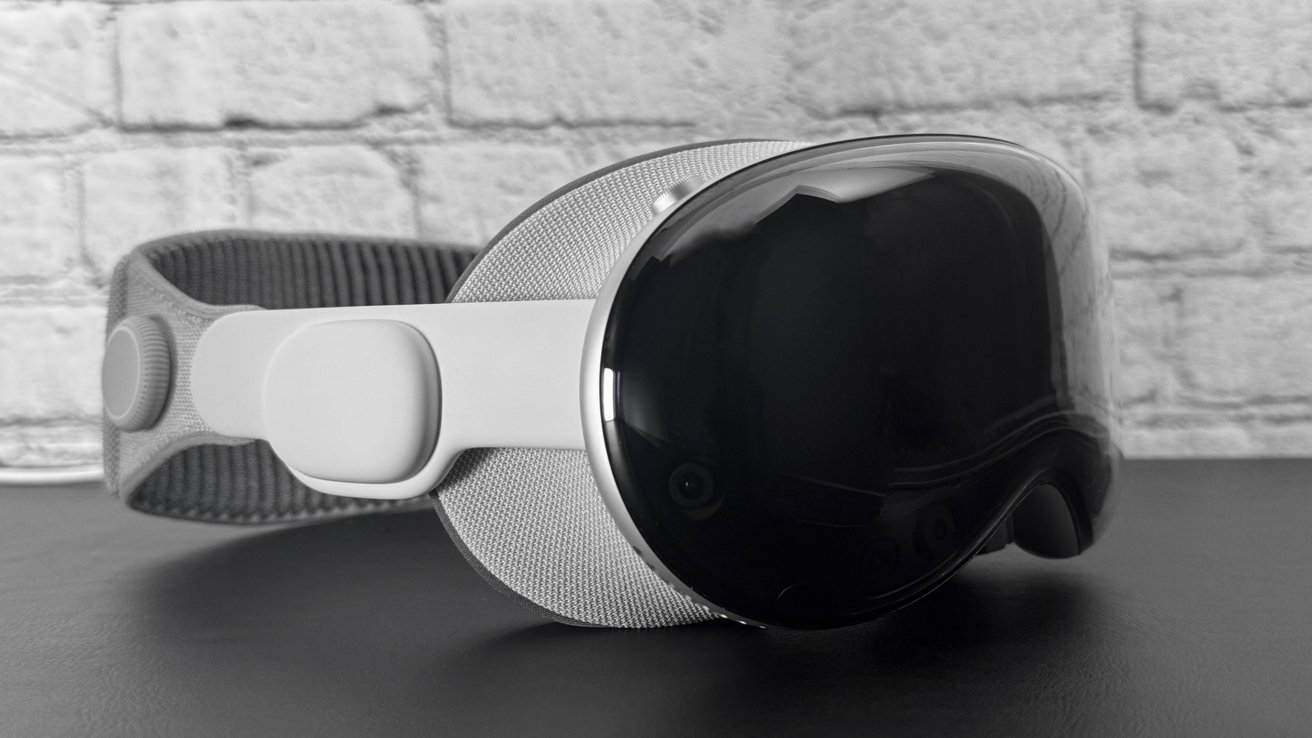
Apple Vision Pro review - Apple's design language is everywhere
Apple wants Apple Vision Pro to disappear into the background, but it's still unmistakably an Apple product. The glass and aluminum enclosure is reminiscent of the Apple Watch, especially with the fluoroelastomer straps that are attached to the audio pods and charger.
The entire front of the headset is a laminated glass plane that doubles as an optical surface for the cameras and sensors. A feature called eyeSight uses a programmed 3D representation of the user called a Persona to show the user's eyes on the outer glass, but only if another person is looking at them.
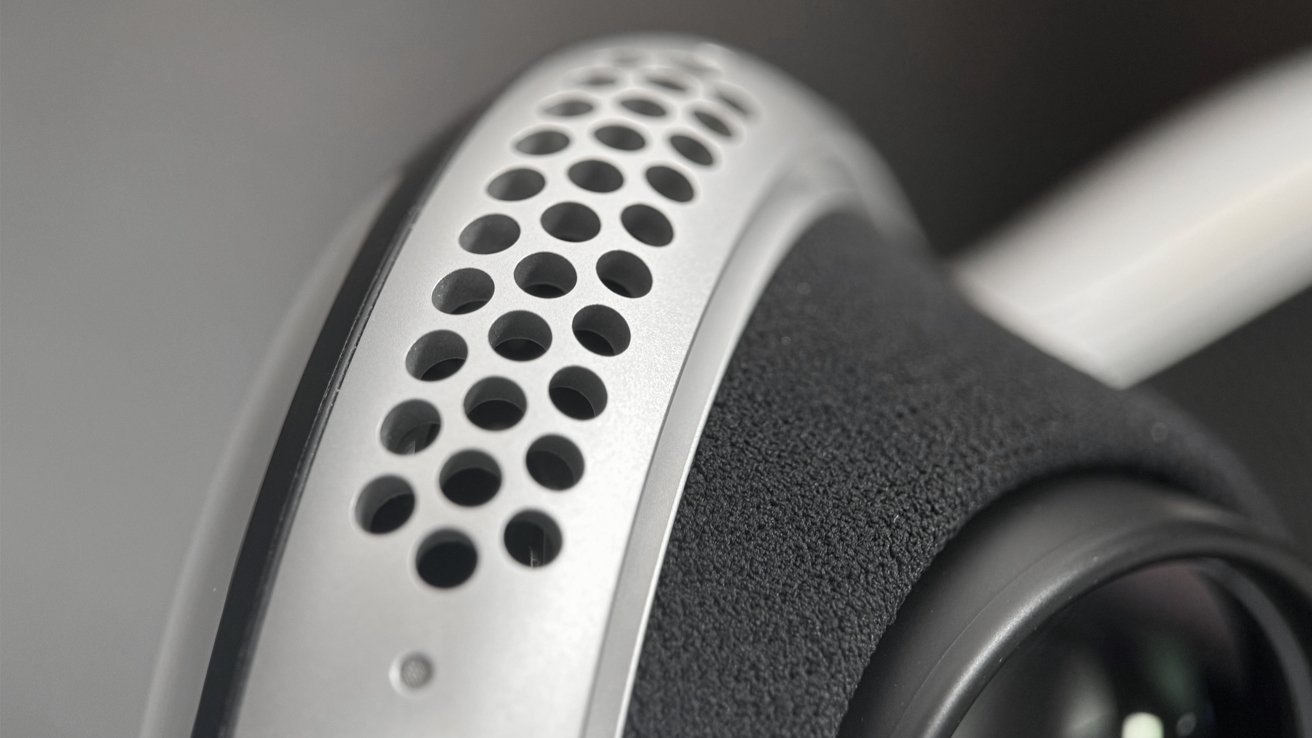
Apple Vision Pro review - ventilation holes keep the headset cool
Holes for ventilation are cut into the top and bottom of the aluminum enclosure. A Digital Crown and Top Button are at the top right and left of the frame, respectively.
A Light Seal and cushion are attached to the headset to fit around the user's eyes. Two headbands are included to give users some option for fit and comfort.
In my testing, I've found the Solo Knit Band to be my go-to. Many have said the Solo band puts too much weight on the user's face and renders it useless for long-term use, but I've had the opposite experience.
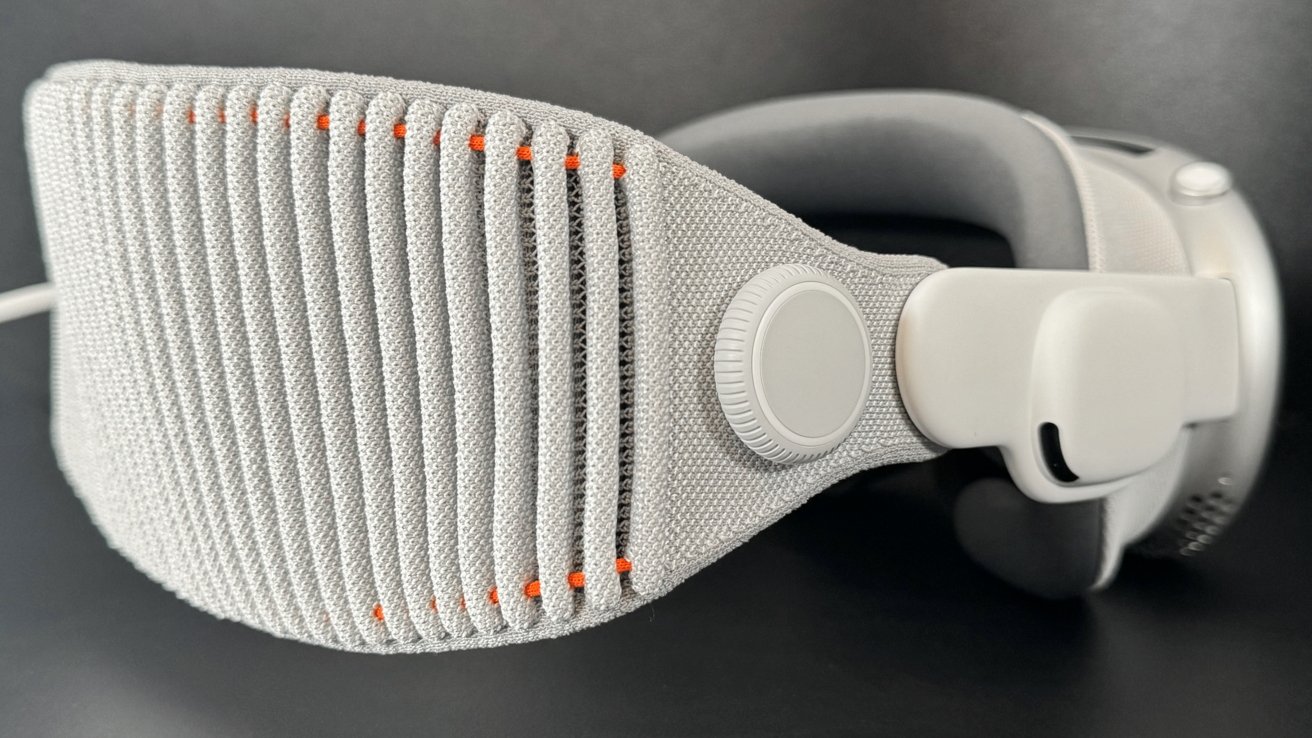 Apple Vision Pro review - the Solo Knit Band looks great but won't be the best fit for everyone
Apple Vision Pro review - the Solo Knit Band looks great but won't be the best fit for everyone
The Dual Loop Band has too many pressure points around my head for it to be comfortable at all. Despite how I adjusted the tightness of the bands, it never felt right, so I switched back to the Solo Knit Band.
The fit and comfort of Apple Vision Pro and its different bands will vary from person to person, so keep that in mind.
With the Solo Knit Band placed just below the crown of my head, I feel like the weight is well distributed across my cheeks, brow, and head. Sometimes, I feel the need to adjust the tightness of the band or reposition the headset, but otherwise, it fits fine.
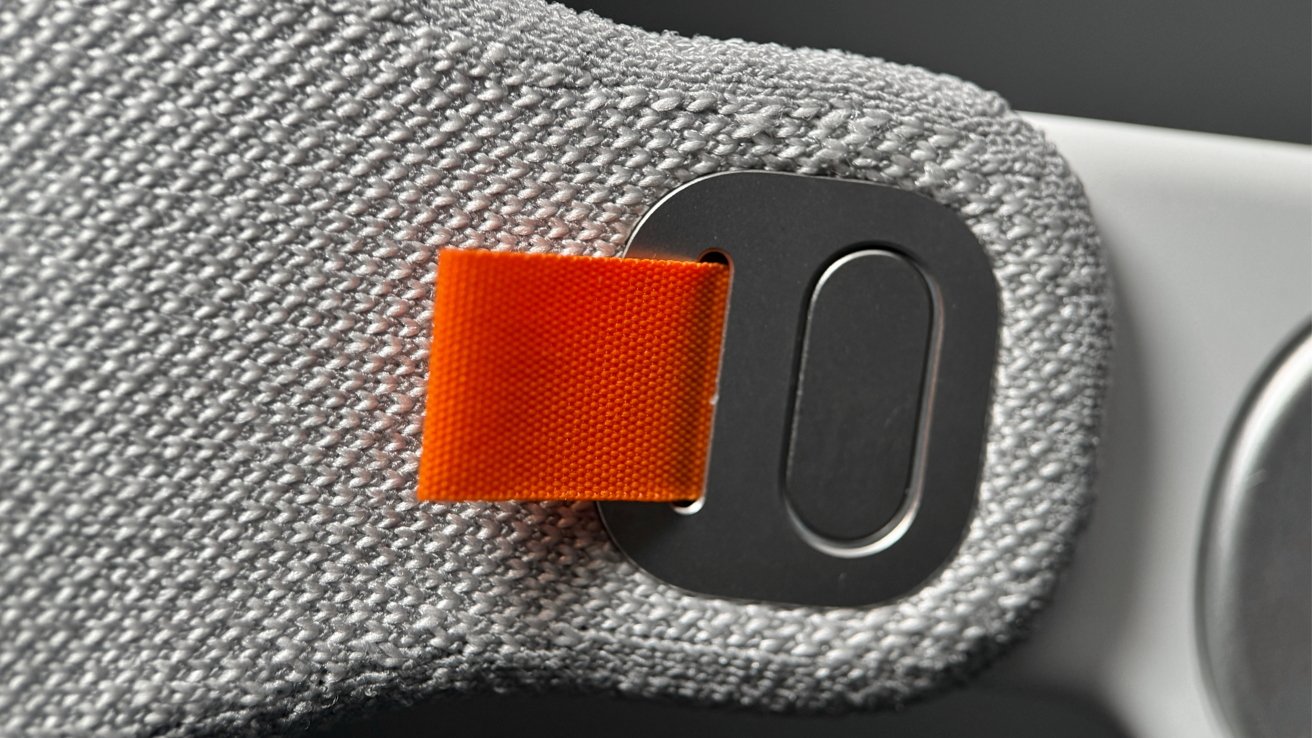 Apple Vision Pro review - easily swap bands by pulling the orange tabs
Apple Vision Pro review - easily swap bands by pulling the orange tabs
The device is powered by a battery that sits external to the headset. It easily lasts 2 hours on a single charge and can be charged and continuously powered over USB-C.
If weight is a problem now, it would have been insurmountable if the battery attached somewhere on the user's head. Weight reduction is the primary purpose of an external battery pack, but it serves another purpose.
When an iPhone ages out, the first thing to go is the battery. With Apple Vision Pro, users need only buy a new battery for $200, with no need for a trip to an Apple Store.
It's also easy enough to run a cable down a hoodie or a shirt to keep it out of the way. The battery fits in a jeans or jacket pocket, and connecting to power is simple since the USB-C port is facing the same direction as the cable.
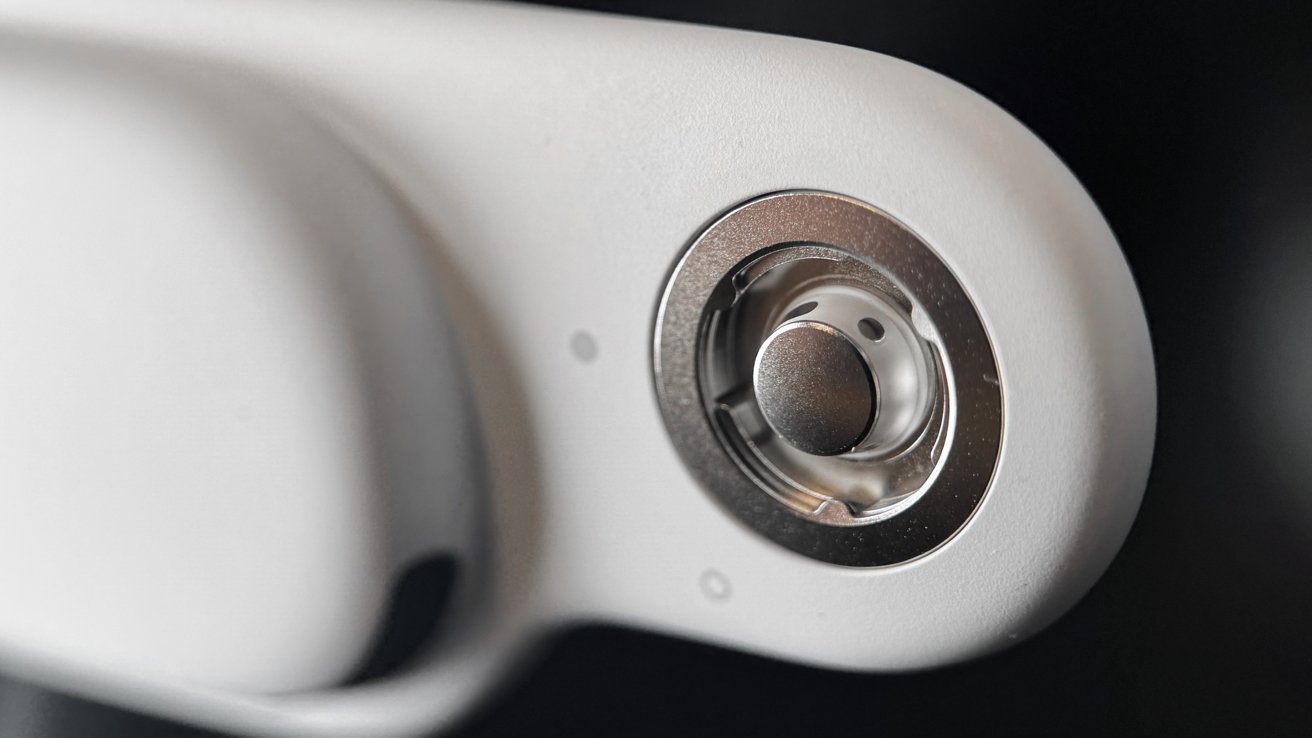
Apple Vision Pro review - the proprietary battery cable connector
Apple Vision Pro weighs between 21.2 and 22.9 ounces, depending on the paired accessories. The battery pack weighs 12.45 ounces.
If you've followed the news cycle around Apple Vision Pro, then you've heard commentary on how it feels to wear the device. The focus has been on the weight despite the product sitting squarely in the middle of the range of VR headset mass.
Comfort- and weight-wise, Apple Vision Pro has been fine for me. It has been no more taxing to wear than the PSVR 2, which weighs 19.8 ounces without the cable attached.
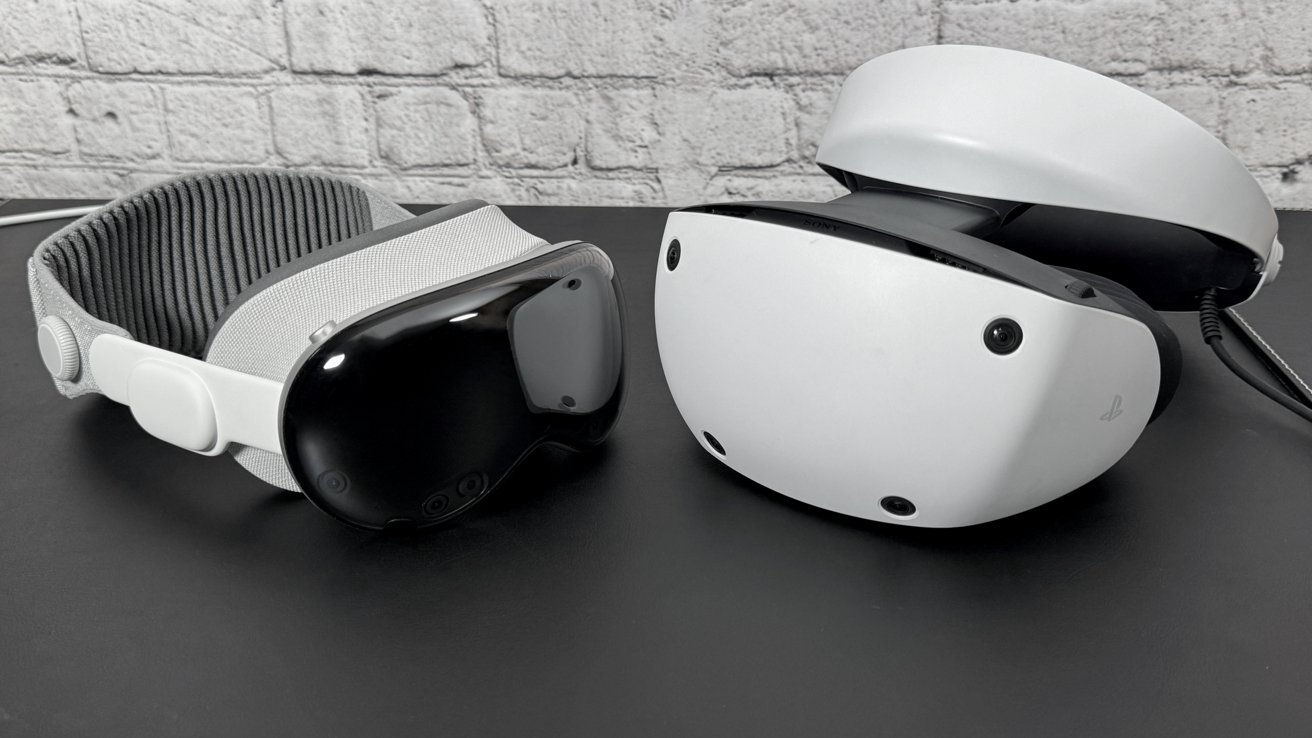
Apple Vision Pro review - PSVR 2 is close to the Apple Vision Pro weight, but much larger
Like with any computer, breaks are recommended with Apple Vision Pro. I'm not using the device for more than the length of a movie or a couple of hours at once before taking the headset off, but I am using it across entire eight-hour work shifts.
Overuse of Apple Vision Pro can lead to problems like with other headsets. Your eyes will get tired, your skin will feel a little sore, and your senses will feel overwhelmed if you keep the device on for too long -- for me, it's about three hours of constant use.
Despite being strapped to your face, it doesn't feel as personal as an Apple Watch. I hope third-party accessories help breathe some life into Apple's sterile, safe design.
Apple Vision Pro review -- Display and fidelity
Apple Vision Pro's design is almost a moot point for the user because you don't see it when you wear it. The entire experience of visionOS exists within two postage-stamp displays that are inside the headset.
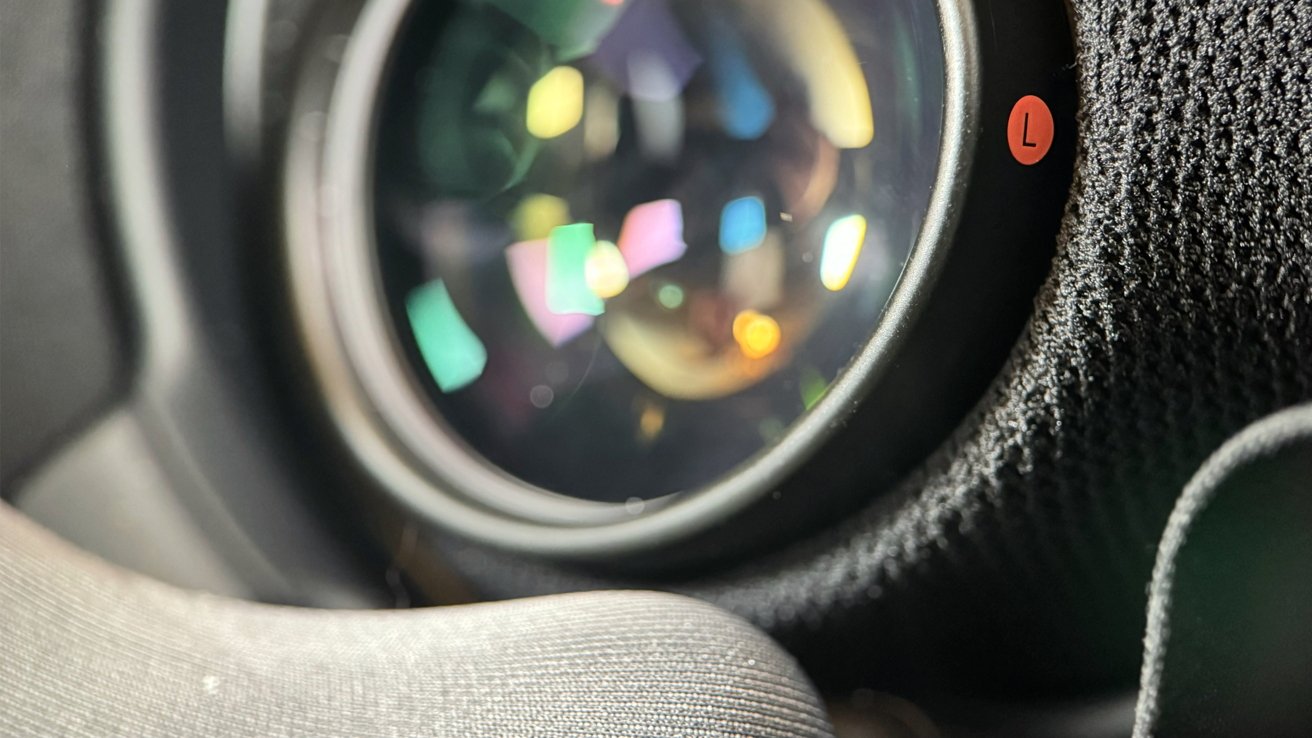
Apple Vision Pro review - seeing the world through wearable displays
There is one display per eye at about 3,380 pixels per inch. Teardowns show Apple's claim of an "equivalent to a 4K TV per eye" isn't quite right, but close at 3,660 pixels by 3,200 pixels.
The micro-OLED display emits light from the diode, so there's a near-infinite contrast and perfect blacks. They support 92% P3, which is a little less than Apple's usual spectrum support, but only artists might notice.
The display refreshes between 90Hz, 96Hz, and 100Hz based on settings and app needs. Video playback can occur in variables of 30fps and 24fps to keep video playback from juddering.
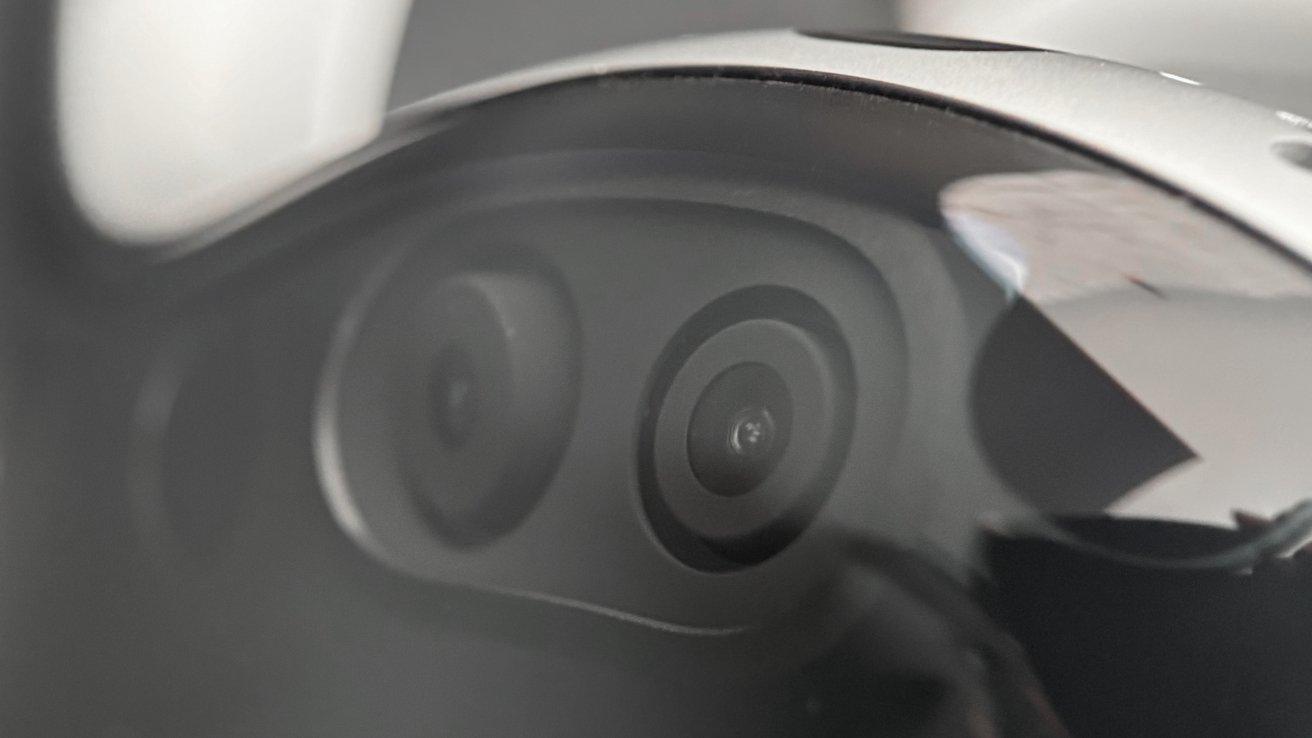
Apple Vision Pro review - external cameras capture the world in 3D
The external cameras and sensors work with the R1 processor to recreate the user's space in 3D within the displays. It sometimes makes you feel like you're not wearing a headset and looking at tiny displays, but the illusion is broken if the room is too dim -- the dimmer the room, the more noise is present.
If you've ever used a VR headset, you'll have experienced something called the "screen door effect." That's because the resolution of the displays isn't high enough to eliminate visible pixels altogether, especially with your retina profoundly close to the display.
Apple Vision Pro toes the line of being pixel-dense enough to eliminate the effect. The pixel density is so high that UI elements, text, and windows look as crisp as they would on an iPhone.
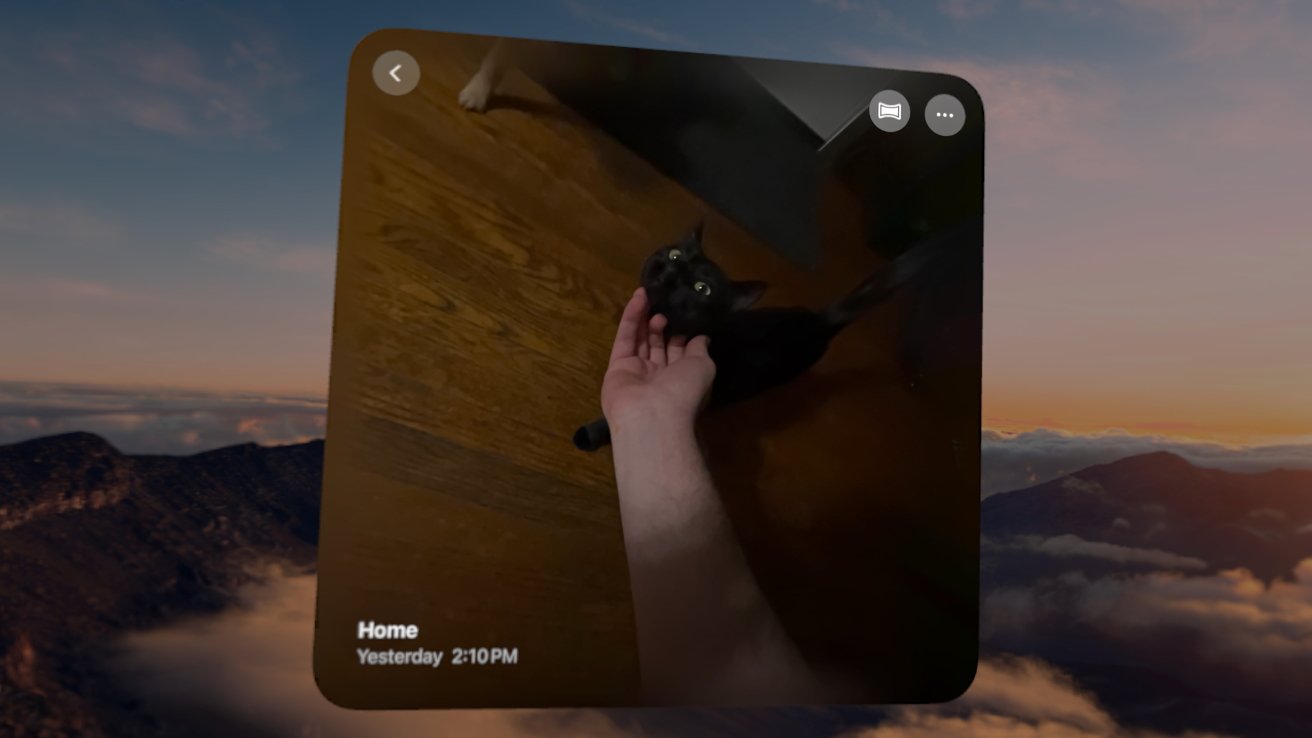
Apple Vision Pro review - viewing photos on a pixel-dense display
Compared to my experience with PlayStation VR 2, it's night and day. It's like looking at a 480i CRT and then looking at a 4K TV side by side.
There are limitations to passthrough since you're viewing the world through cameras. However, having the ability to see the space around you clearly is a game changer for wearable headsets.
No matter how bright a space is, the display view will always differ from the real-world view. The camera-fed displays can't show an image with enough contrast, brightness, or saturation to truly represent what it looks like outside the headset.
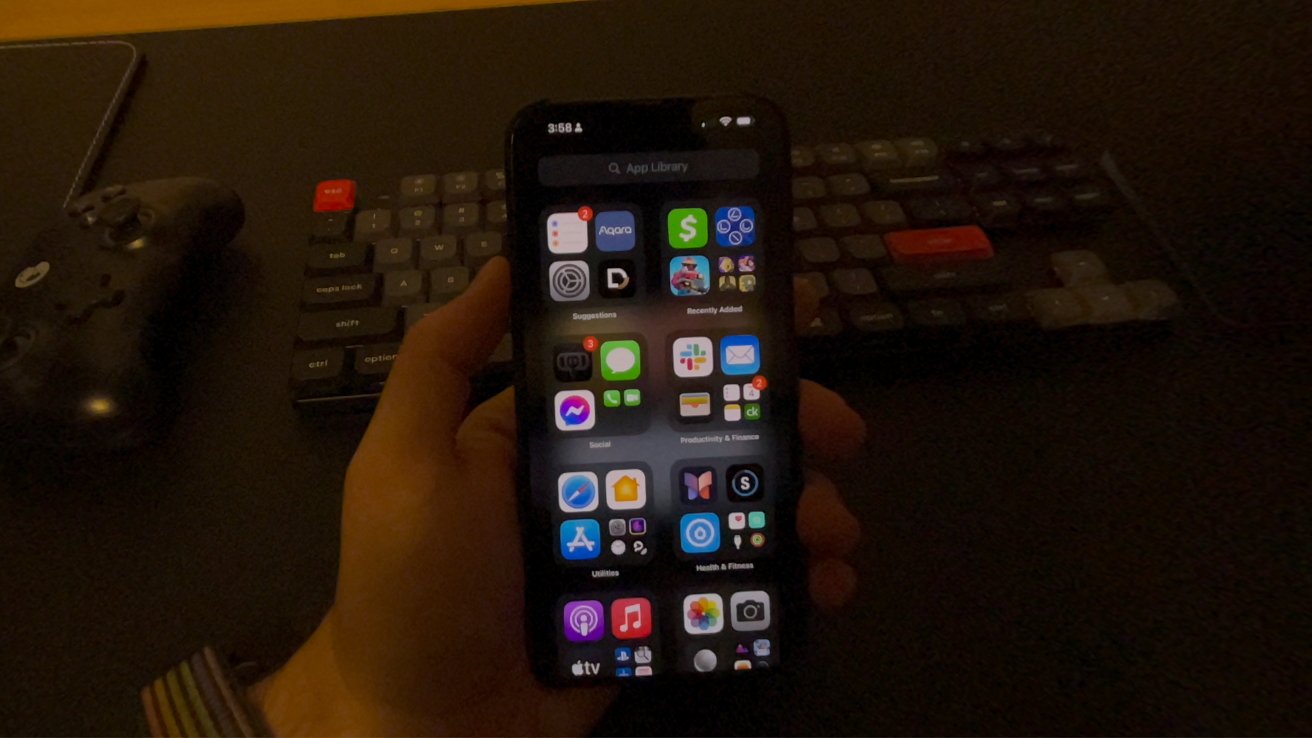 Apple Vision Pro review - it's possible to use your iPhone, but visibility is low
Apple Vision Pro review - it's possible to use your iPhone, but visibility is low
The view when wearing the Vision Pro is impressive, but you'll always realize how much brighter a space is when taking it off.
My dim office with wood panels appears a bit muddy due to the low light levels, so I spend a lot of time using immersive environments when working. It's always been too dark in the office, so perhaps it is time to rethink ambient lighting.
Also, you're still looking at displays that don't fill up the interior of the headset, which means no peripheral vision and a black space at the edges of your view. This is a limitation of the technology, and no headset can reproduce full peripheral vision today.
Our brains are really good at focusing on something and forgetting when something odd is in our field of view. Remember, your nose is always visible, but your brain actively makes you forget it's there unless you're made aware of it.
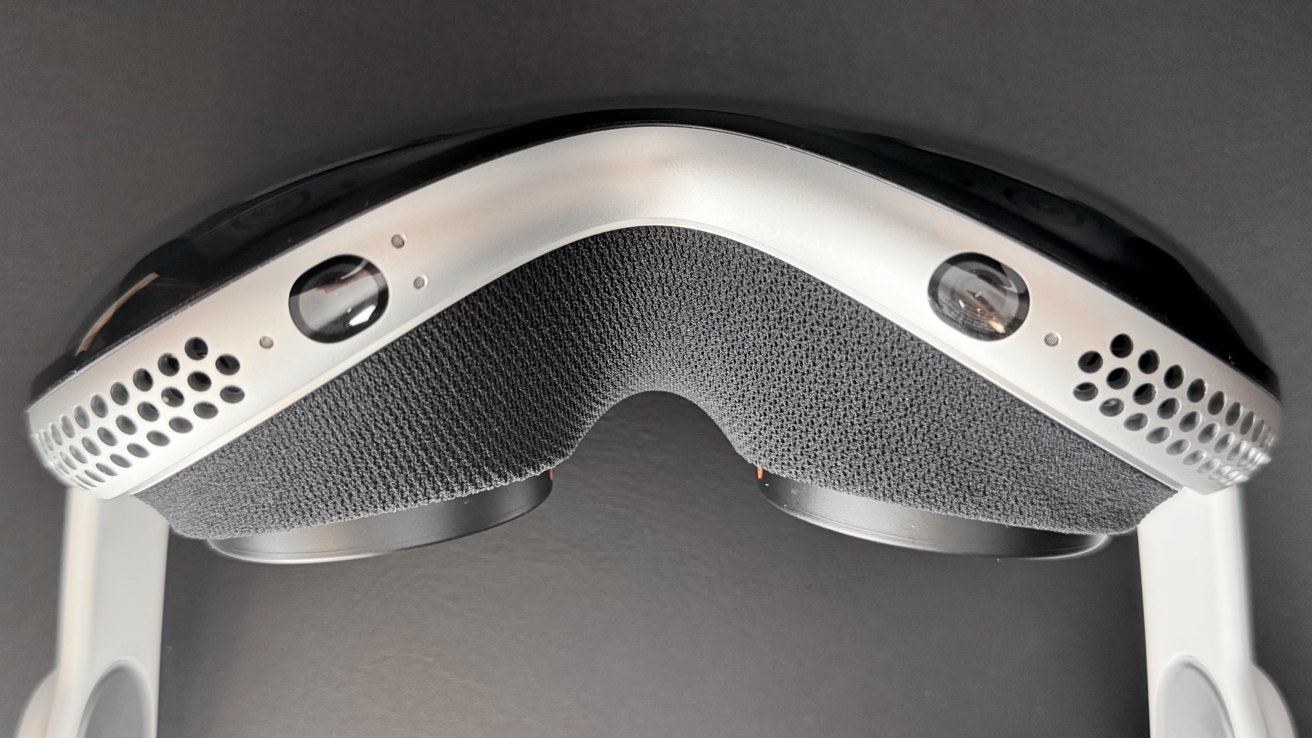 Apple Vision Pro review - these displays are surrounded by fabric, so it's not a 180 degree field of view
Apple Vision Pro review - these displays are surrounded by fabric, so it's not a 180 degree field of view
That has been my experience with the black frame around the display. Also, if you actively try to look too far to the left or right, you'll "see" the division in the displays where your nose is as a kind of double vision.
No matter how good the passthrough is, no matter how much contrast is available, bending light through mirrors and glass will still produce artifacts and distortions. If you're in a dark, immersive view with white content in a window, the content will produce light reflections on the lenses.
There are more visual oddities that are not unique to Apple Vision Pro. Motion blur, color fringing, and other effects are not unique to the product, and can't be eliminated entirely with today's technology.
All of that said, I'm quite impressed with what Apple has accomplished with its display and passthrough capture system. Nothing else comes close.
Apple Vision Pro review -- M2 and R1
Apple made it simple to order the Apple Vision Pro thanks to a single set of chips available for it. It has the M2 for processing and the R1 for managing the cameras and sensors.
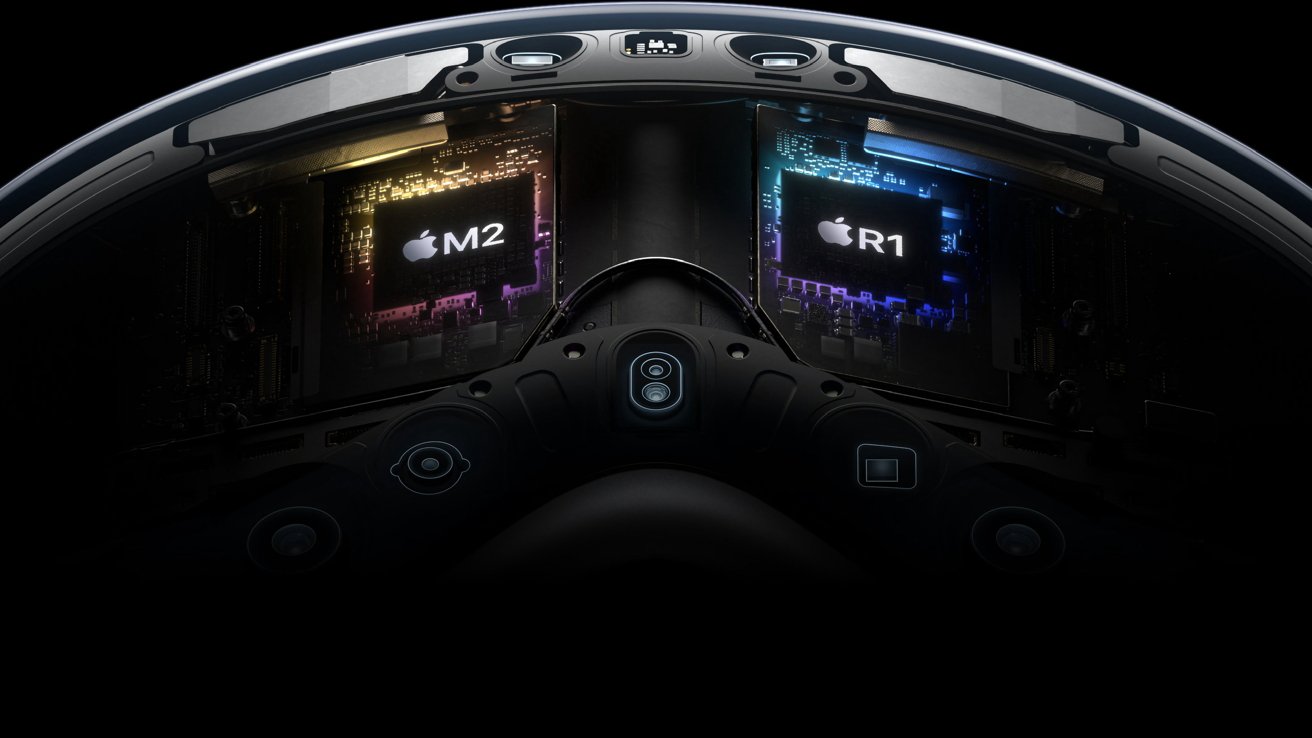
Apple Vision Pro review - M2 and R1
I chose the 1TB option, so there would be no question about storage space for the life of the product. It starts at 256GB and also has a 512GB option.
The M2 has an 8-core CPU, a 10-core GPU, and a 16-core Neural Engine. It also has 16GB of RAM -- so it's basically the Mac mini configuration.
The R1 is capable of processing camera footage and sensor input with 12 millisecond latency. It takes about 100 milliseconds to blink, so I'm certain latency won't ever be an issue for biological reasons.
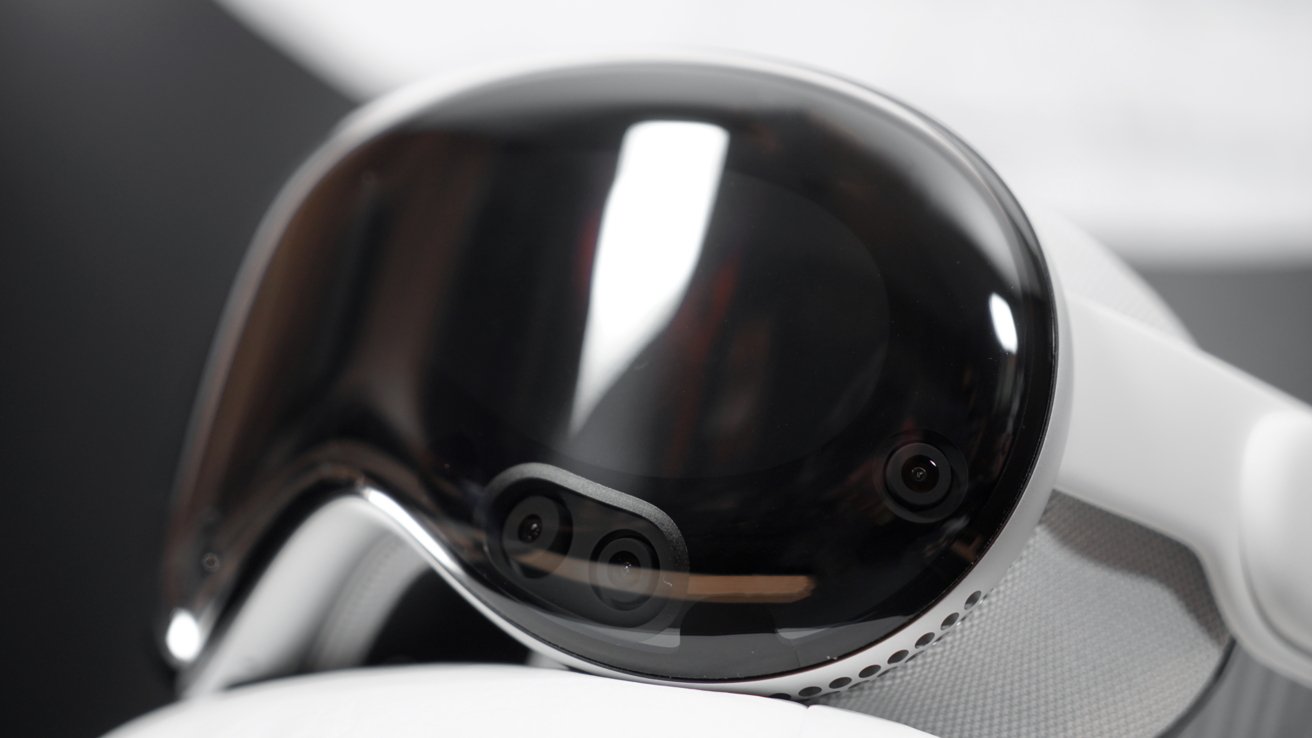 Apple Vision Pro review - 12 milliseconds of latency ensures the user isn't disoriented
Apple Vision Pro review - 12 milliseconds of latency ensures the user isn't disoriented
Processing power shouldn't be an issue for Apple Vision Pro, at least not anytime soon. Since visionOS developers have been porting iPad app experiences or building native apps, there's little danger of M2 being a ceiling for most apps in the near-future.
If Apple had allowed Apple Vision Pro to run Mac apps, it would have been a much more complex and unpredictable computing environment. However, since a Mac can be used in the virtual space, it seems the M2 shouldn't be a problem.
None of the apps I've tested seemed to tax the M2. This isn't some mysterious chipset -- it's a known entity used in Macs and the iPad Pro.
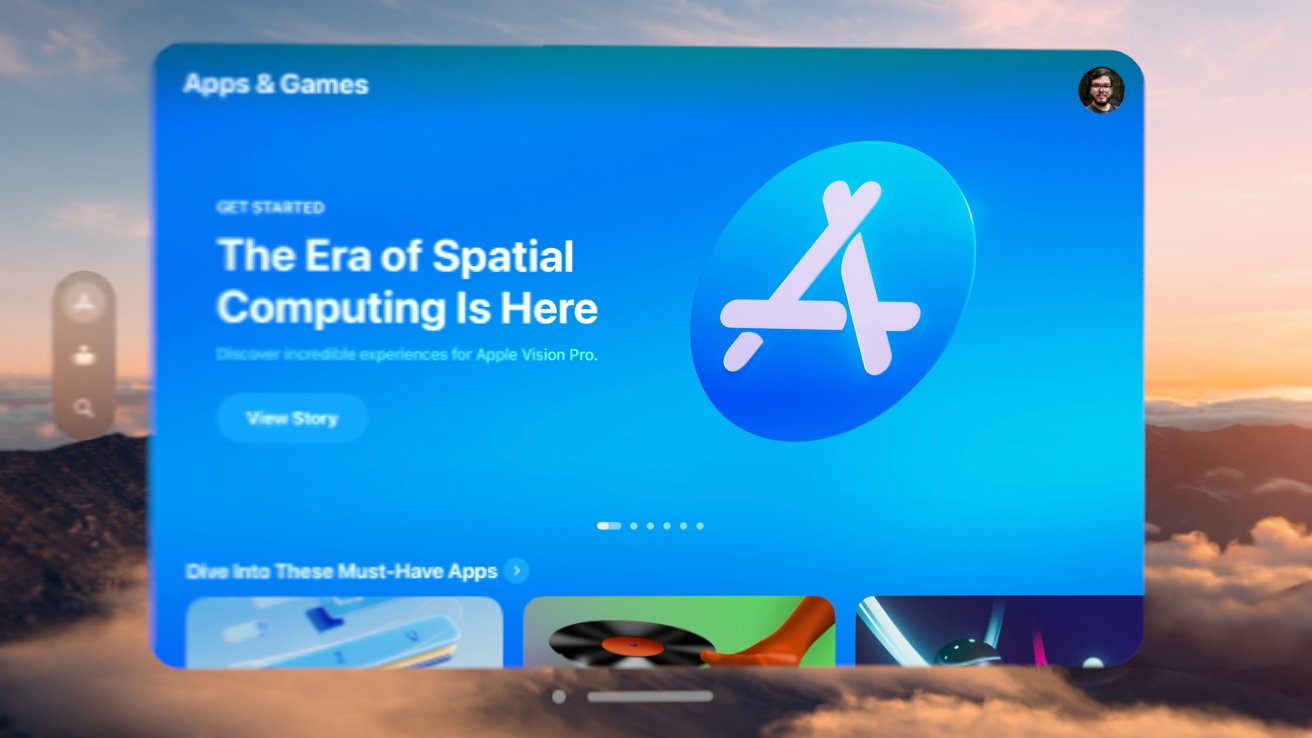
Apple Vision Pro review - the App Store launched with 600 native apps
The new operating system isn't without its bugs. Crashes do happen, especially for non-optimized iPad apps, but that's sure to change as more apps go native and visionOS is updated.
Rumors suggest Apple won't release an Apple Vision Pro 2 or a non-Pro Apple Vision until 2026 or so. That's a long time to have only the M2 processor, but I doubt it'll be an issue for the platform.
For example, I've been working from my M1 iPad Pro since it was purchased in 2021, and it hasn't even begun to sweat under modern apps. I expect Apple Vision Pro to have the same kind of performance longevity.
Other specs
Rounding out some of the specs that haven't covered yet, there are two high-resolution main cameras and six world-facing tracking cameras. The camera system captures 18mm, f/2.00 images or video with 6.5 stereo megapixels.
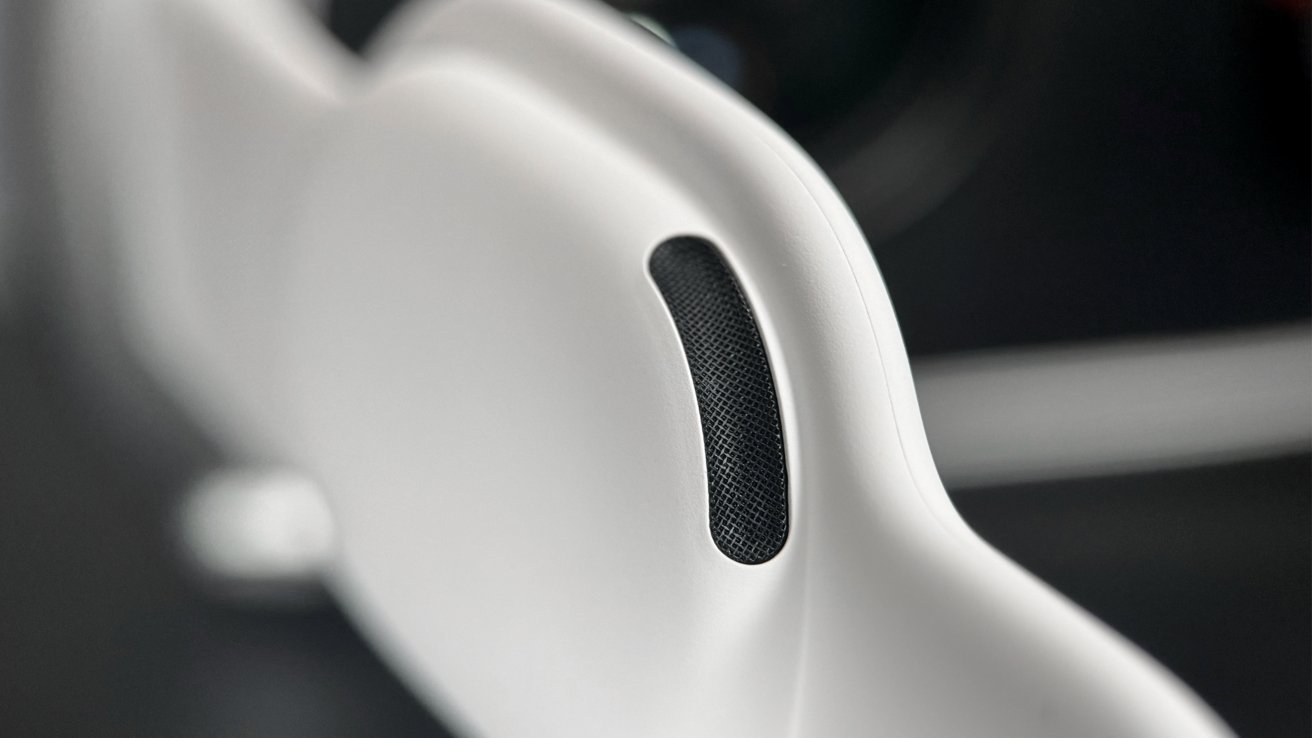
Apple Vision Pro review - Spatial Audio is played from the audio pods
There's a TrueDepth camera, LiDAR Scanner, a flicker sensor, and an ambient light sensor. There are four inertial measurement units.
Optic ID is the biometric for Apple Vision Pro. It scans the user's iris for access to secure systems like passwords or purchases.
The audio pods play spatial audio based on room scanning data. There is a six-mic array with directional beamforming for calls.
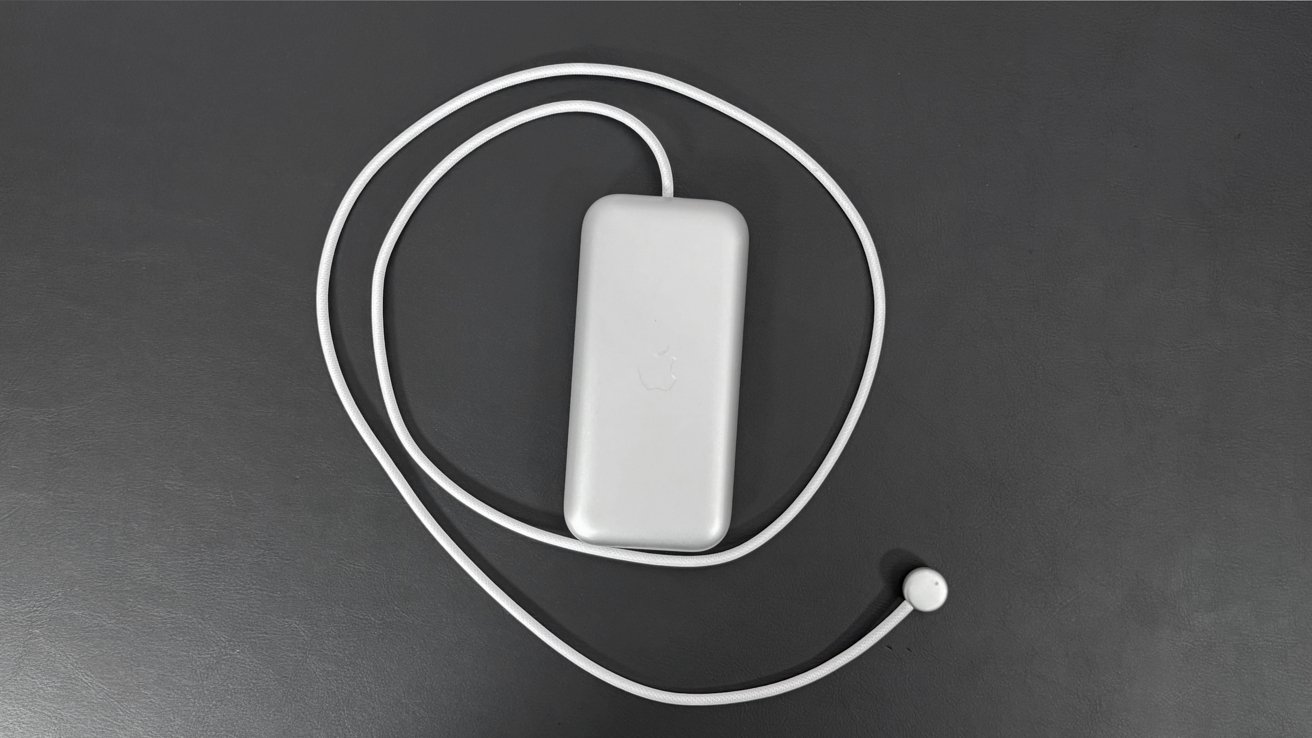
Apple Vision Pro review - an external battery pack keeps some of the weight off the head
Apple Vision Pro uses Wi-Fi 6 and Bluetooth 5.3. Direct H2-to-H2 ultra-low-latency connection is used for AirPods Pro 2 with USB-C (compare AirPods prices).
The battery is rated at 3166 mAh capacity with 35.9 Wh. That means adding an additional 10,000 mAh battery should extend battery life to about 12 hours.
Accessories
Accessories for the Apple Vision Pro are scarce at launch. There are some incredibly expensive bespoke accessories sold by Apple, and some generic cases sold on Amazon from brands with too many adjacent consonants in their company name, but little else.
 Apple Vision Pro review - an array of accessories are included
Apple Vision Pro review - an array of accessories are included
Apple includes a Light Seal, cushion, Solo Loop Band, Dual Loop Band, Battery, Cover, USB-C cable, 30W charger, and a polishing cloth in the packaging. A carrying case is available separately from Apple for $199, which I'll be reviewing separately.
Anyone who needs glasses or readers had to order inserts when placing their pre-orders. I got a pair of Zeiss optical inserts, which shipped separately from the headset directly to my address.
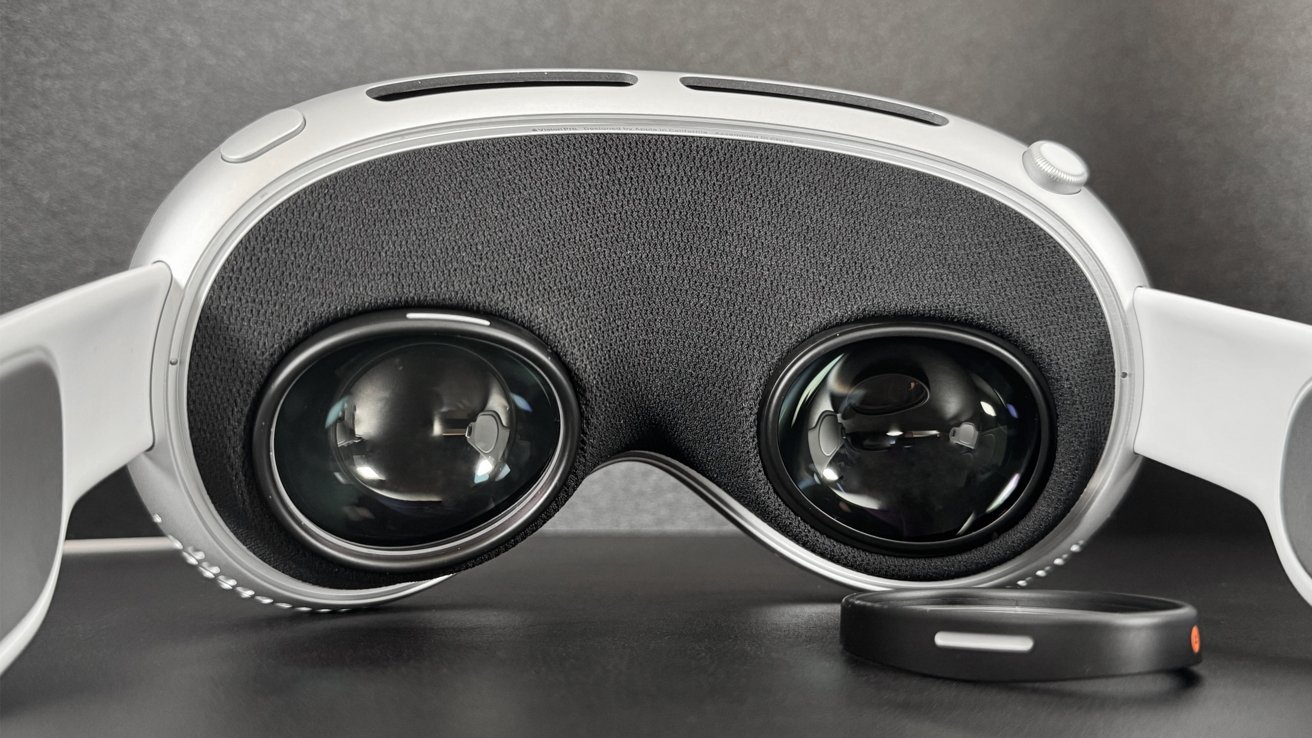 Apple Vision Pro review - optical inserts magnetically attach
Apple Vision Pro review - optical inserts magnetically attach
Unfortunately, the lenses didn't arrive in time to travel with me to Nashville to pick up Apple Vision Pro, but it wasn't an issue. My eyesight was good enough to make do until I returned home, but the inserts made a world of difference.
Spare Light Seals, straps, and batteries were available for purchase as well. However, I expect third-party accessory makers to offer much more reasonable options.
Apple Vision Pro review -- Features
Now that we've discussed the hardware at length, it's time to dive into actually using Apple Vision Pro software. It runs a specialized operating system called visionOS, which uses 3D elements in app windows, interactive objects, or room-filling spaces.
Set up
Setting up Apple Vision Pro for the first time can be a little overwhelming. You're trying to fit the device to your head without knowing how it should be worn, all while trying to get through the calibration.
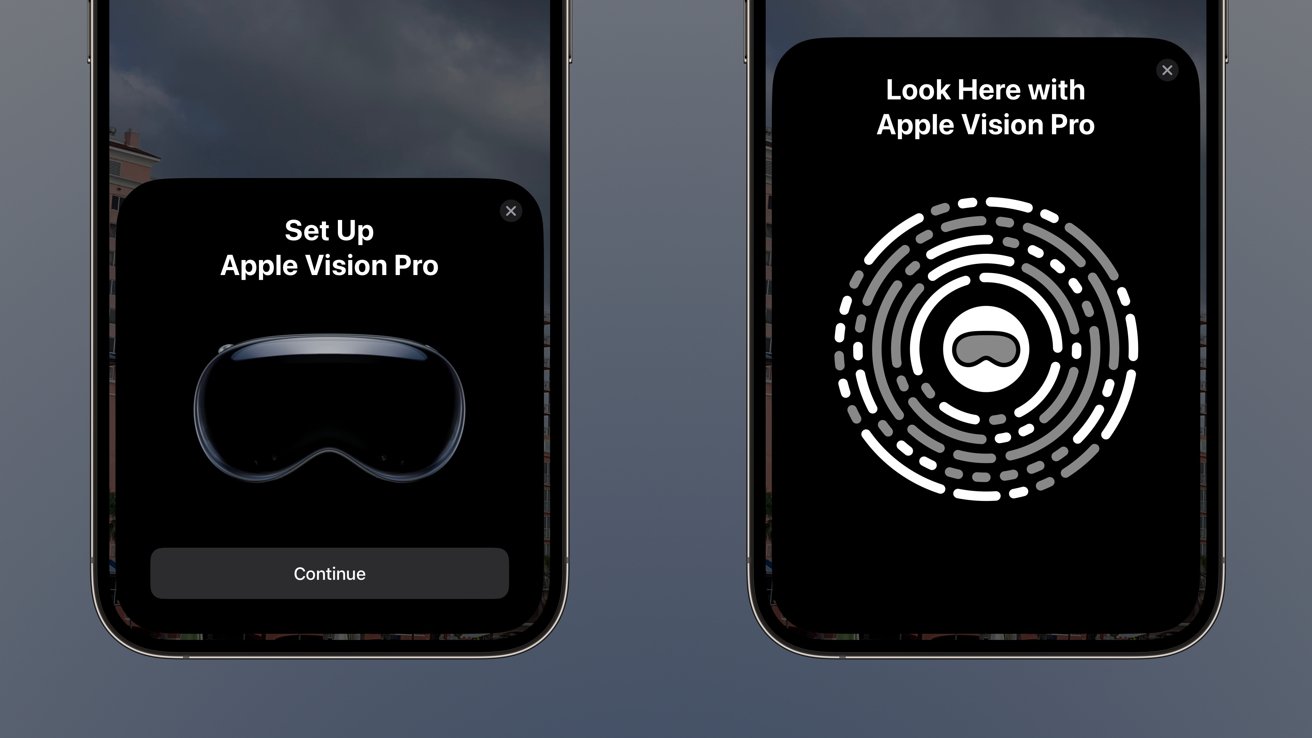 Apple Vision Pro review - initial setup starts with an iPhone
Apple Vision Pro review - initial setup starts with an iPhone
My experience with the in-store demo helped prepare me for what to expect and how to properly fit Vision Pro. After a couple of calibration steps, you begin the login process.
Like any new Apple product, you have to log in to your Apple ID. Typing in your password is by far the most arduous part of the setup that I hope no one has to experience more than once.
I don't have my Apple ID password memorized. So, I needed to open Passwords on my iPhone and view the password on-screen while typing it via a floating keyboard within the headset.
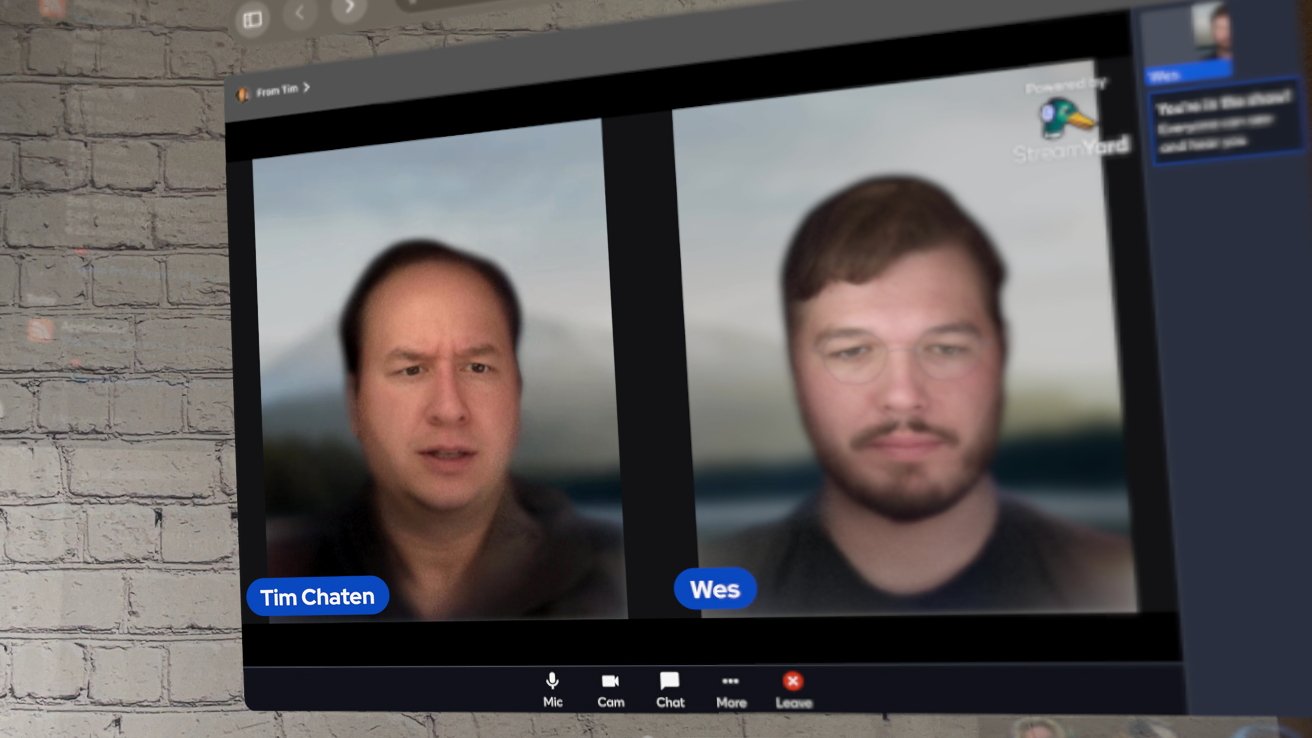 Apple Vision Pro review - Personas are as weird as people say they are
Apple Vision Pro review - Personas are as weird as people say they are
After logging in and configuring some settings, you're greeted with the Home View. I went and paired a physical keyboard and a Magic Trackpad at the first opportunity.
You do have the option of setting up a Persona during the initial setup, but mine came out looking quite weird, with a horn of hair poking out the left side of my head. I recommend initiating the Persona setup to the point where it says to remove the headset, then taking a moment to fix your hair before setting up Persona.
visionOS
The first thing you see after setup is the Home View. There isn't a Home Screen like on iPhone or iPad -- think of it more like Launcher on Mac.
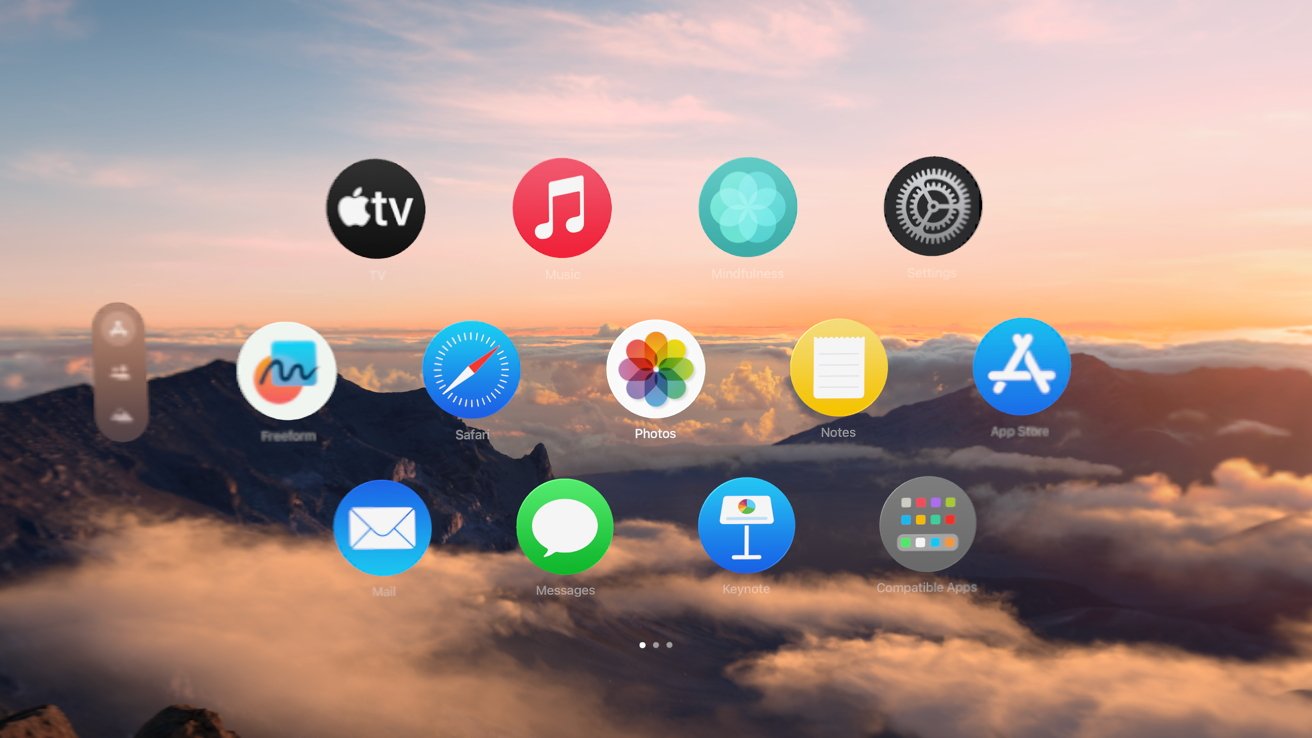 Apple Vision Pro review - the Home View
Apple Vision Pro review - the Home View
As of visionOS 1.0.2, the Home View can't be organized. It shows a group of Apple apps first, and then it organizes the rest alphabetically. Compatible iPhone and iPad apps that aren't native are in a folder, also alphabetically.
Several apps and functions aren't available in visionOS, at least not yet. For example, there isn't a Contacts app, though contact info can be managed to some degree in Messages.
Native apps will have a glossy, transparent window view with floating UI elements. Non-native apps will look just like their iPad equivalent, with minimal adjustment options and a rotation button.
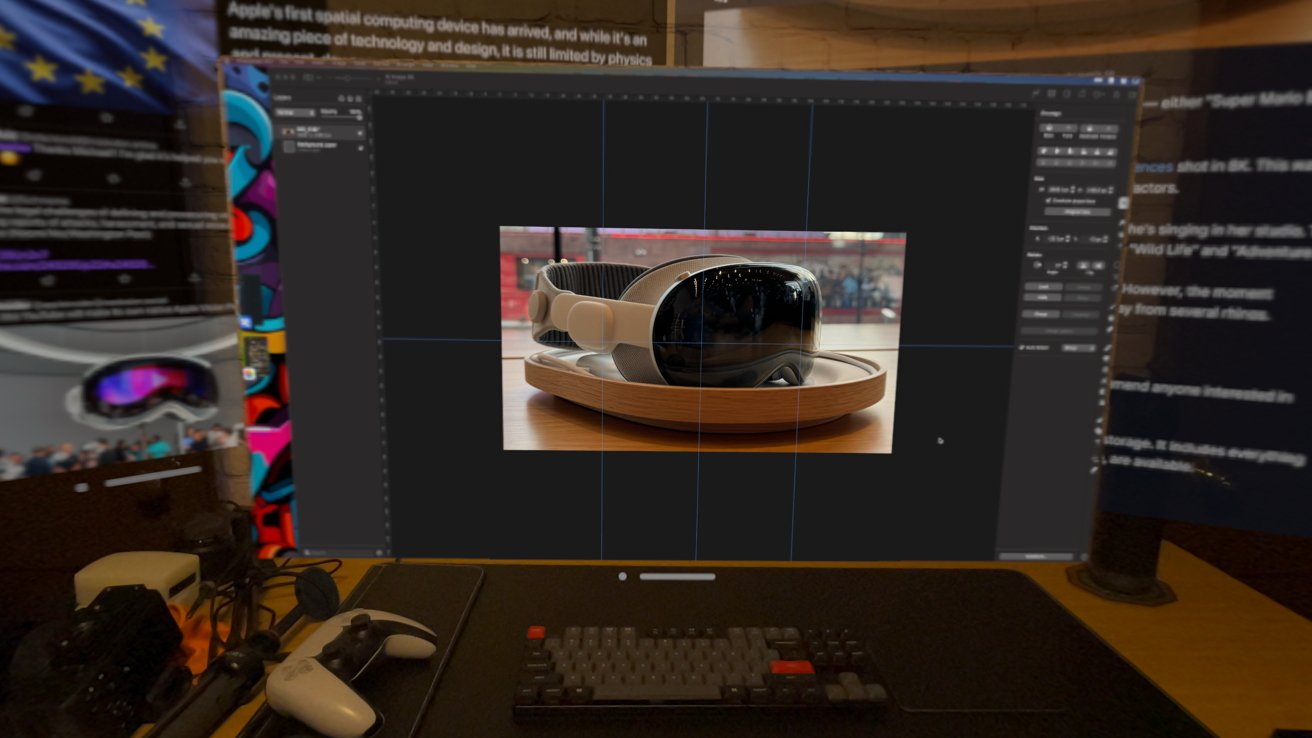 Apple Vision Pro review - bring your Mac desktop into visionOS
Apple Vision Pro review - bring your Mac desktop into visionOS
Otherwise, visionOS is another Apple platform with many of the same UI elements and functions. If you've used an iPad, you'll likely feel right at home in visionOS.
The on-screen keyboard is terrible. Connecting an external keyboard and mouse makes the experience much easier to manage. Using the trackpad is easy, as the cursor will appear in whatever window you're looking at. There's no mouse support at launch, and we don't think it's going to make an appearance any time soon.
The look and pinch method of operation is mostly reliable, though tracking can kind of get confused at times, especially in low light. Having a trackpad available alleviates this limitation, especially in iPad apps with small UI targets.
The lack of a desktop or Home Screen is the primary differentiator between visionOS and iOS or iPadOS. There's no way to quickly switch between apps like with Stages in Stage Manager or Spaces on Mac.
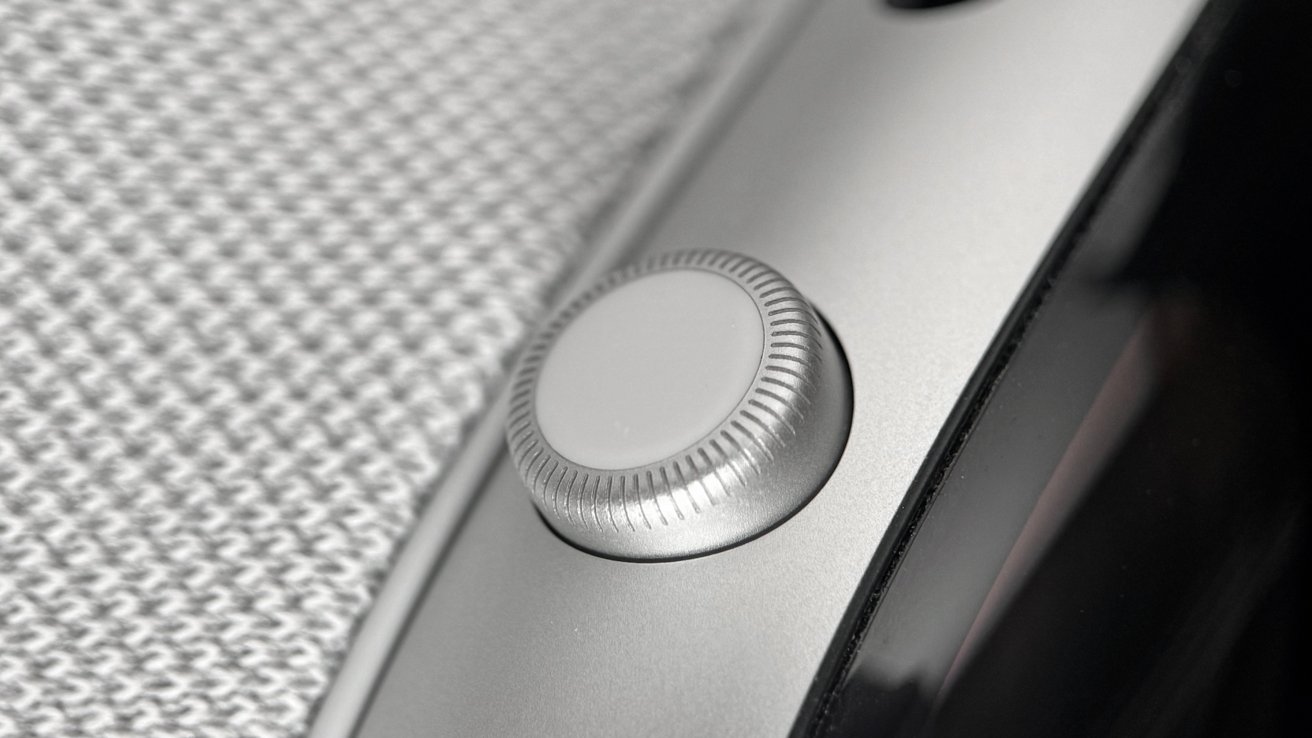 Apple Vision Pro review - you're going to be reaching up to that Digital Crown a lot
Apple Vision Pro review - you're going to be reaching up to that Digital Crown a lot
Instead, users need to learn to take advantage of the "infinite canvas." Open only the apps you need when you need them, and place them anywhere in 360 degrees for easy access.
Immersive views feel almost like wallpapers. If you go half into Mount Hood, it feels like your workspace is just a window within your office.
I've been working with Drafts and Safari at a desk in front of me. If I stand up and walk across the office, I can check various social media apps and news feeds, while another desk has my MacBook Pro desktop floating above it.
It's like having macOS Spaces spread across physical reality.
Entertainment
If I had to pick the "killer app" for Apple Vision Pro, it is the range of entertainment options available. Think of the device as the best home theater system in your home, and the price becomes easier to swallow.
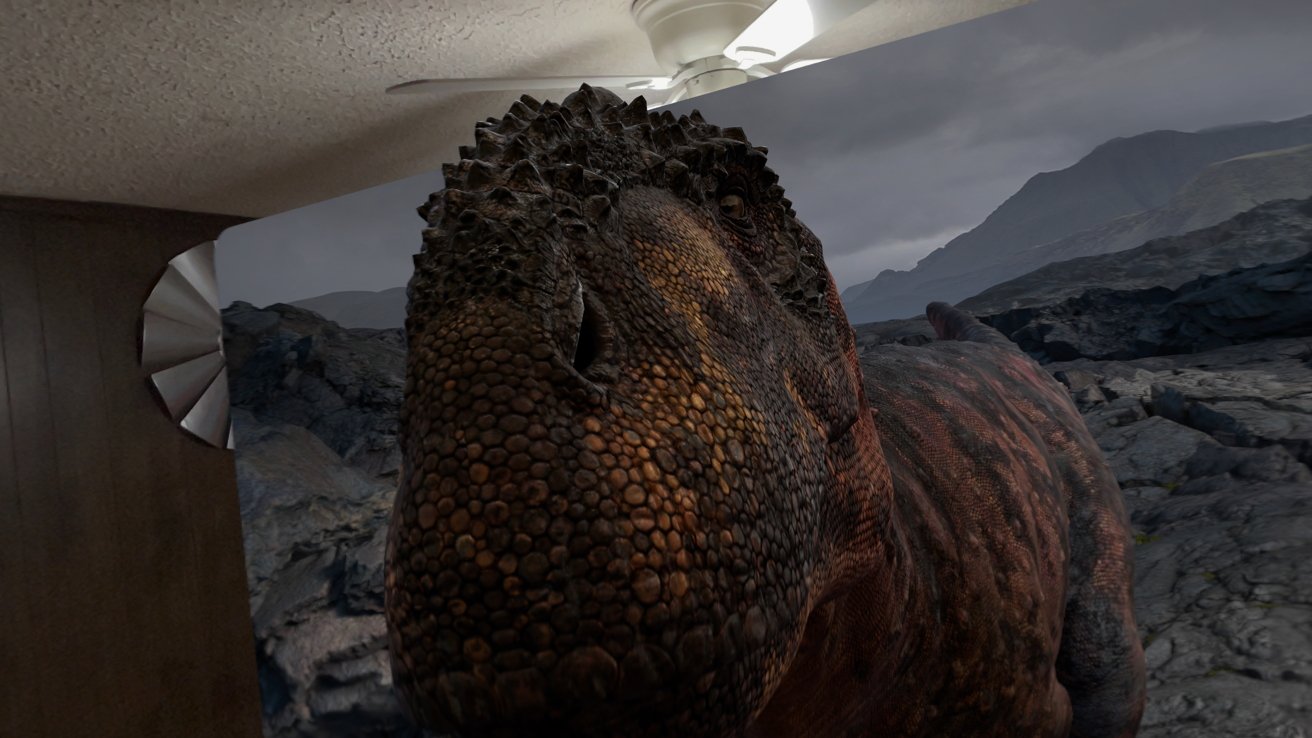 Apple Vision Pro review - 3D experiences can take over your living room
Apple Vision Pro review - 3D experiences can take over your living room
For comparison, a 5.1-channel Sonos system connected to a 65-inch 4K OLED TV costs about $4,000 at a minimum. However, Vision Pro can't be viewed by your entire family, so it is still quite an investment.
There are several kinds of entertainment options available for Apple Vision Pro. You can watch 8K immersive videos, 4K 3D movies, or standard 2D videos.
Games have a similar set of options. They can either take over a space as an immersive VR game, show a 3D app window with interactive spatial elements, or act as a simple 2D window as if it were shown on an iPad display.
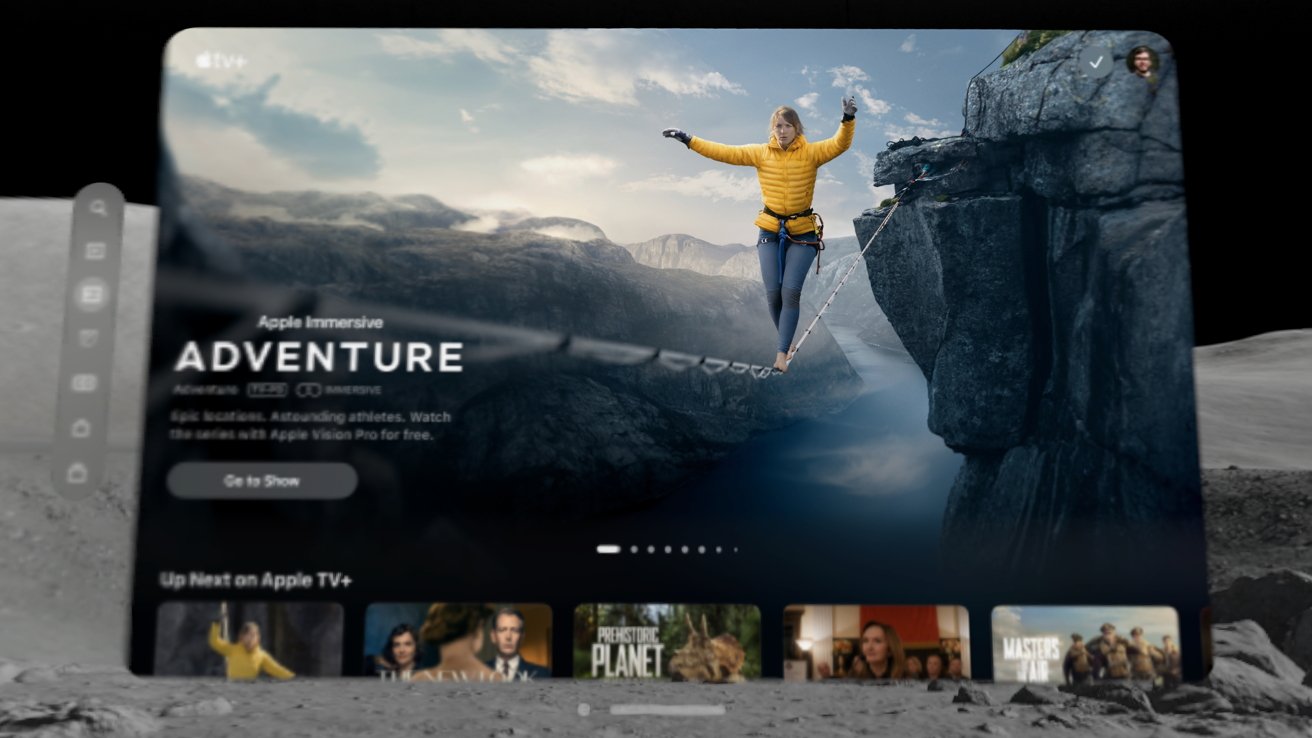 Apple Vision Pro review - immersive Apple TV content is incredible
Apple Vision Pro review - immersive Apple TV content is incredible
So far, the 8K immersive video is my favorite experience, though I see potential in the storytelling that interactive apps offer. "Encounter Dinosaurs" is an app, but really, it is more like an interactive short film that brings dinosaurs into your living room.
I'm excited to see what content producers and app makers do with the new spatial platform. While classic entertainment options work fine within Vision Pro, the custom-made 3D apps and experiences are truly groundbreaking.
Work
Apple Vision Pro is a computer, and many of us use computers to work. So, it's the iPad all over again as people ask if they can get work done on Apple Vision Pro.
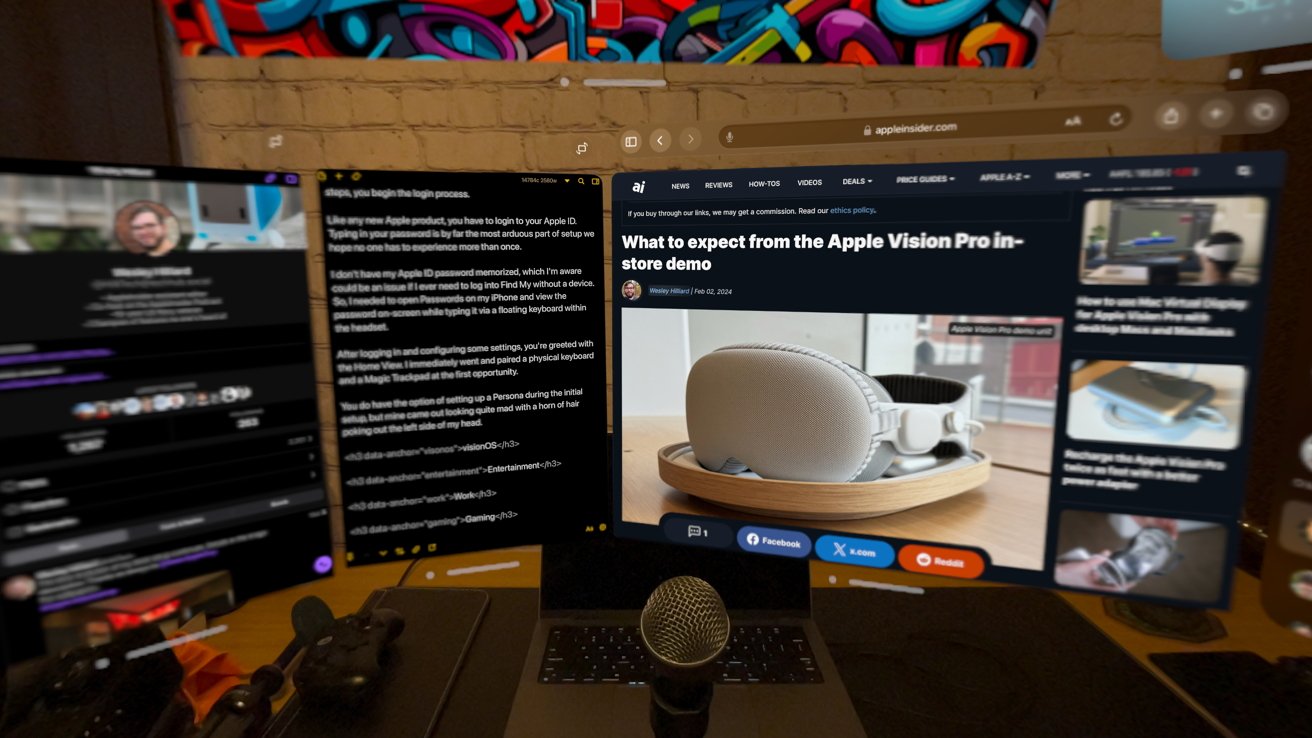 Apple Vision Pro review - working from visionOS is not only possible, it's where this review was written
Apple Vision Pro review - working from visionOS is not only possible, it's where this review was written
The answer hasn't changed despite this being a new platform -- it depends.
If you could already get your work done on an iPad like I can, it is certainly possible to get your work done on Apple Vision Pro. However, everything isn't going to translate one-to-one.
If you're a Mac user and want to work from Apple Vision Pro, the good news is you can bring your Mac window into visionOS. There are some limitations, but the option does let you use Mac apps while using Apple Vision Pro.
The problem I'm running into while writing this review and doing general work for AppleInsider is app availability. In a perfect world, if every app on my iPad Pro were available on visionOS from day one, then my workflows would be reproducible on Apple Vision Pro with some tweaks.
That isn't the case.
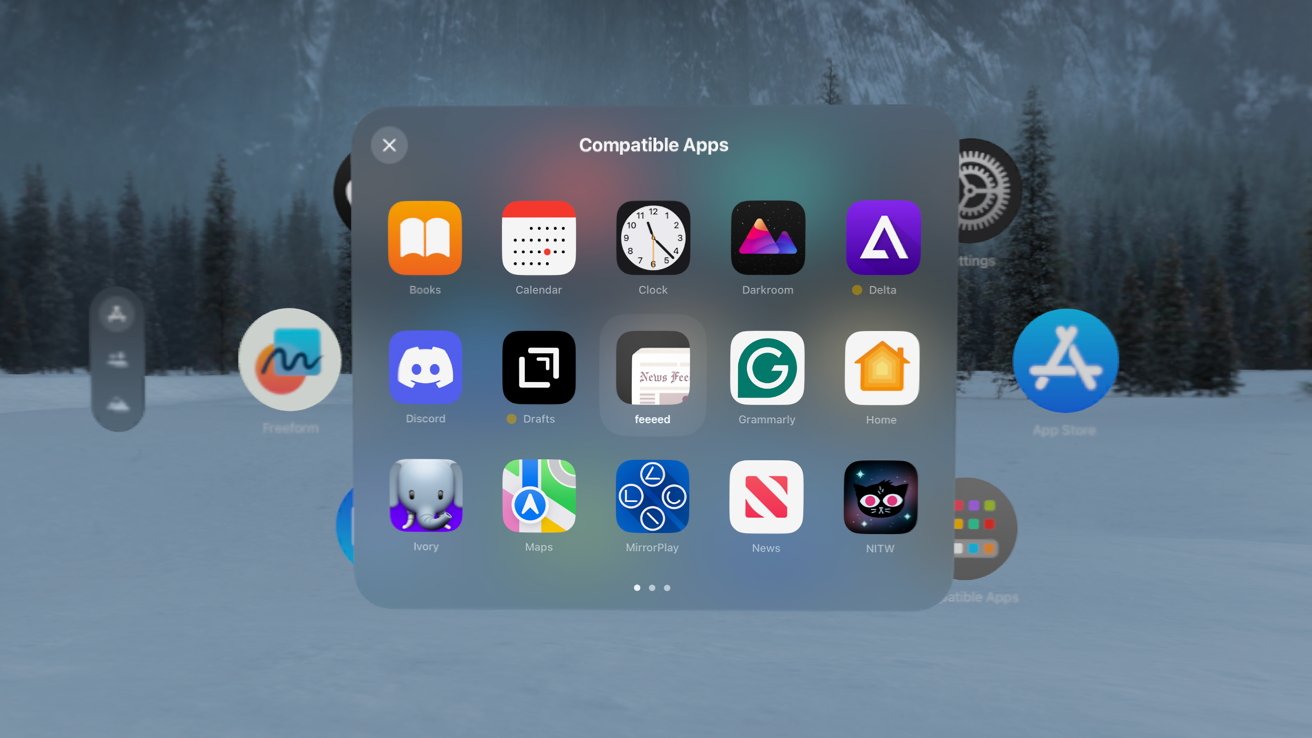 Apple Vision Pro review - Many apps are missing and most are just iPad ports
Apple Vision Pro review - Many apps are missing and most are just iPad ports
Many app developers have not only chosen to not port apps to Apple Vision Pro, but they're also preventing the iPad version from running on the headset, until they can work out bugs and other problems. So, while everything isn't available today, in theory, most of these workflows will be reproducible at some point as soon as more apps get published.
As of the publication of this review, I can perform most of my day-to-day tasks while wearing an Apple Vision Pro without the help of a Mac. Some tasks will require me to remove the headset and move over to the iPad, like managing social media and creating posts.
Some workflows will need to be rethought for the new platform that lacks space separation with stages and such. Implementing the Mac into my workflows and downloading the necessary iPad apps to that machine might work, but that'll take some trial and error as it gets some real-world testing during a work shift.
Like with the iPad, I expect Apple Vision Pro will start as a mostly workable solution that'll get better with time, updates, and apps. It's early days, and much of my workflows are already covered.
Gaming on Apple Vision Pro
I've already mentioned gaming in the entertainment section, but I want to dive into this with more specificity.
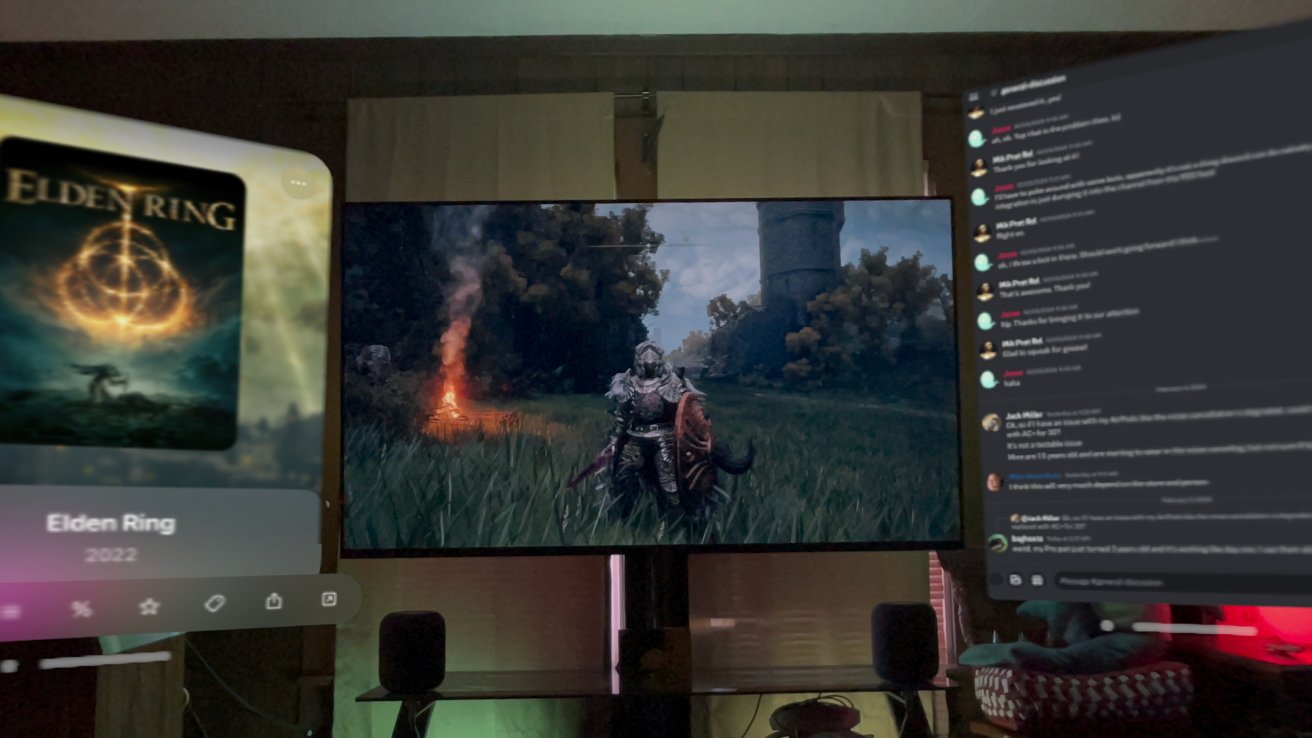 Apple Vision Pro review - gaming on a TV with the headset on is possible, just not ideal
Apple Vision Pro review - gaming on a TV with the headset on is possible, just not ideal
Wearing Apple Vision Pro and using passthrough to view a TV screen and play a video game is possible but not a great experience. Lag isn't an issue, you can see the display and react without issue to what's happening in the game, but it lacks resolution, saturation, and fidelity as it's a video of a display.
Instead, I recommend using streaming apps in visionOS like MirrorPlay to have a PlayStation 5 appear as an app window. Further discussion of options for Apple Vision Pro is beyond the scope of this review, but we'll be breaking them out very soon.
There are other options, like using an HDMI streaming peripheral and app combo, but I haven't tested this yet.
Otherwise, gaming in visionOS is similar to gaming on an iPad. You can use the system controls of looking and pinching if the game allows it, or you can connect a controller over Bluetooth.
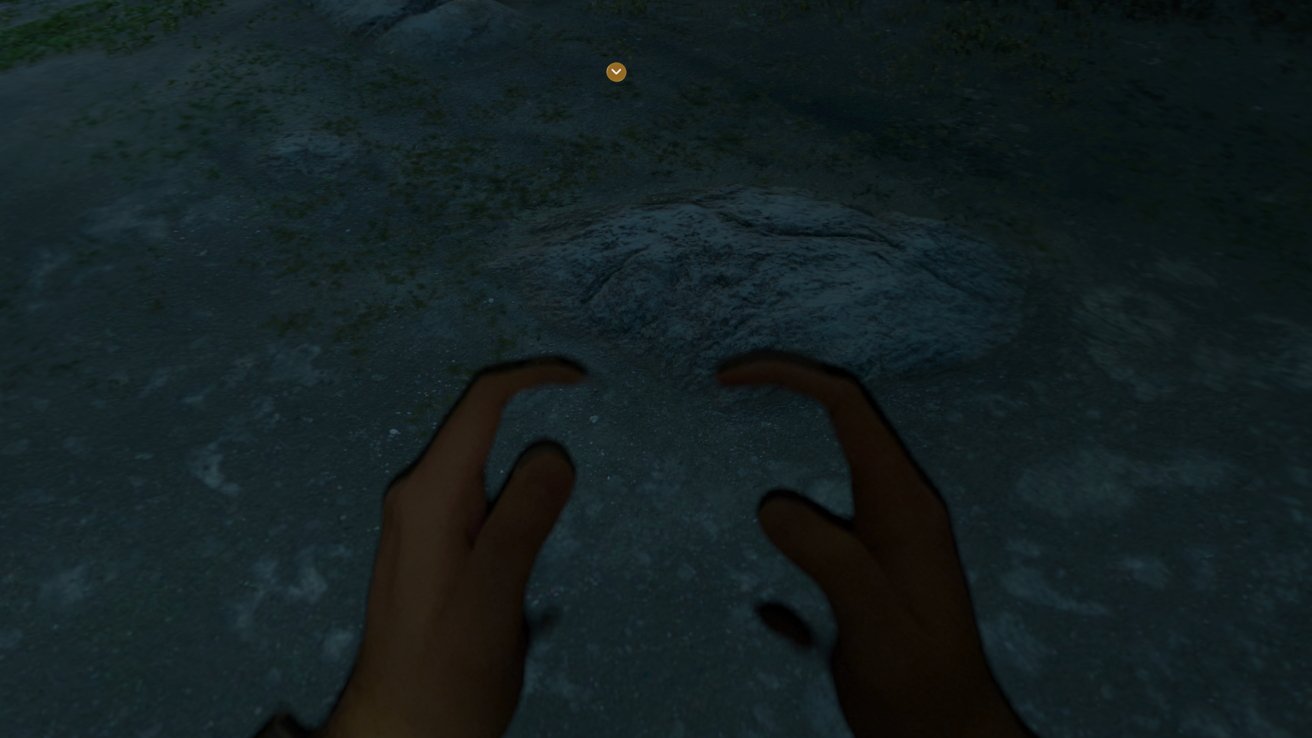 Apple Vision Pro review - it's a little disorienting not being able to see the controller
Apple Vision Pro review - it's a little disorienting not being able to see the controller
The games built for visionOS and immersion are totally new experiences, or as it's known outside of Apple Park, VR gaming. The difference between a visionOS immersive game and a game on PSVR 2 is the lack of a mandatory physical controller.
For example, "Synth Riders" has players hit notes with their hands to score points. Since you're not holding a controller, there isn't any haptic feedback, which is very noticeable if you're used to games like "Beat Saber."
I hope that Apple allows third-party accessory makers to build compatible VR controllers with haptic engines in the future. That feedback is make-or-break territory for immersive games.
The native Apple Vision Pro app story
A lucky few were able to try Apple Vision Pro before it launched, and even fewer were able to get dev kits. So, as Apple Vision Pro launches, most of the developer community has never seen their app running natively on the hardware.
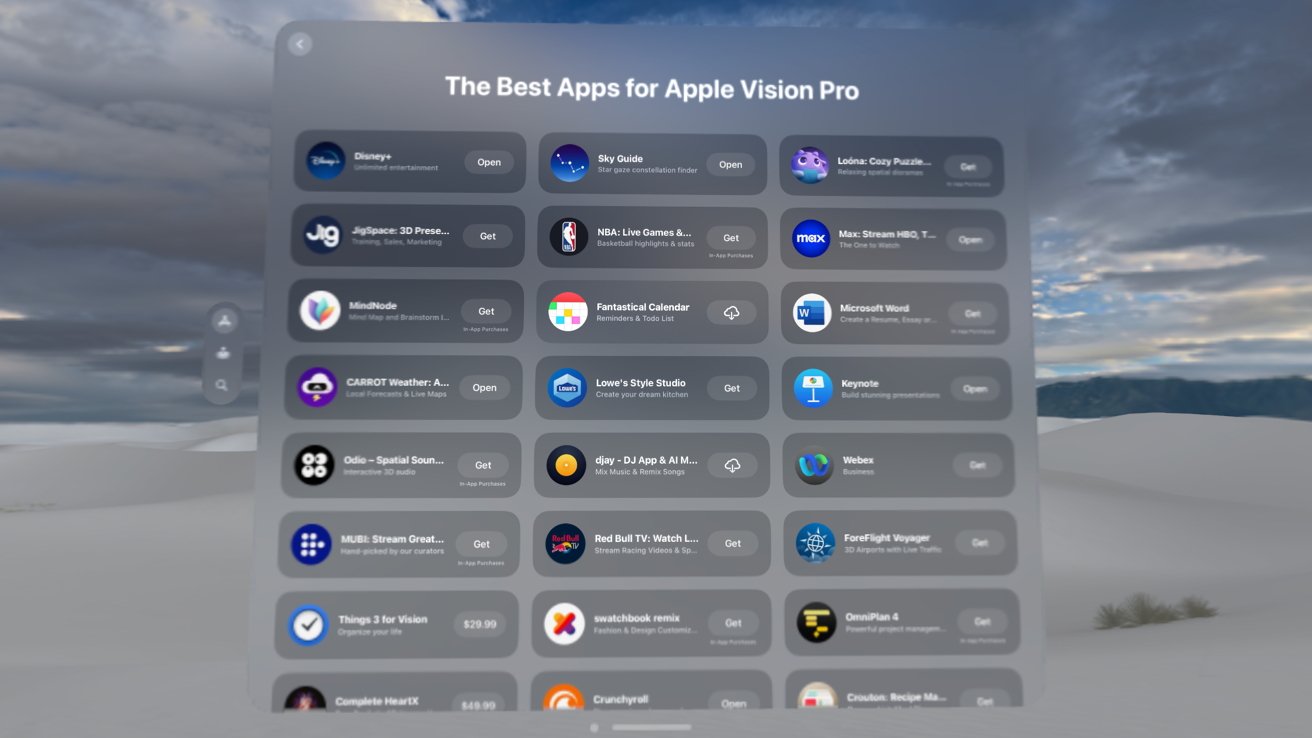 Apple Vision Pro review - native apps are few and far between, for now
Apple Vision Pro review - native apps are few and far between, for now
Developers could build native apps using a simulator on their Mac before the hardware was available and could travel to specific cities around the world for help from Apple. Outside of that, developers likely opted out of building a native app for the hardware launch.
If a developer had an iPad app, they could allow the app to run on visionOS with no changes by not opting out. Many developers chose to opt out since there was no way of knowing if the app would work correctly on the hardware without testing.
In the weeks leading up to the Apple Vision Pro launch, the number of native apps available in the App Store increased from a couple hundred to 600 at launch. That number will grow and accelerate in the coming weeks.
That said, this review is being written without a wide availability of native apps. Even the lack of compatible iPad apps is notable.
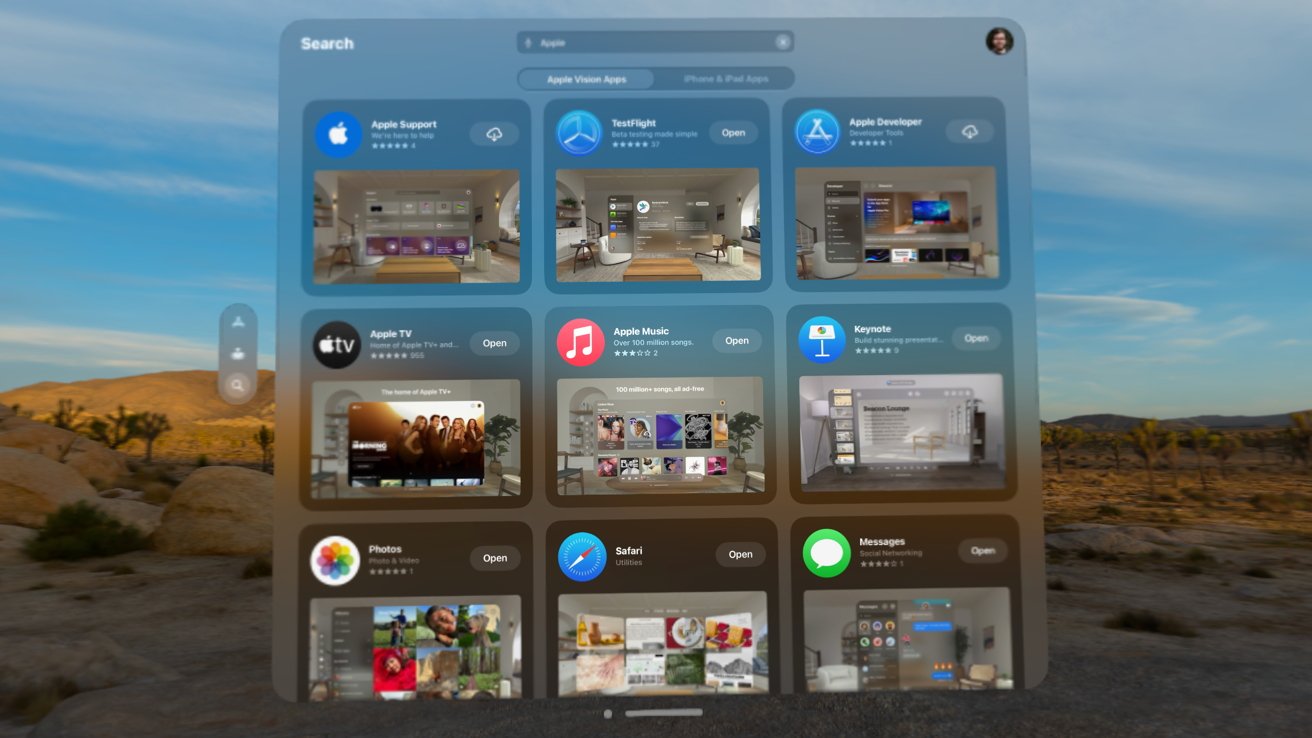 Apple Vision Pro review - even Apple lacks many native apps
Apple Vision Pro review - even Apple lacks many native apps
There's not much Apple could do to remedy this short of sending tens of thousands of developers around the world a headset before launch day. This isn't a ding against Apple Vision Pro -- it's just an observation about the logistics of launching a new platform.
Those considering buying an Apple Vision Pro in the first six months of its release should be aware of the lack of native apps, which is why I'm bringing it up here.
So, while this is a limitation at launch, it will be less so as time goes on. Keep hitting AppleInsider for more app coverage as more native apps launch.
Apple Vision Pro review -- Spatial Video
Apple Vision Pro has a Top Button that really should be renamed to "Capture Button." It is almost entirely dedicated to launching the spatial camera and controlling the shutter.
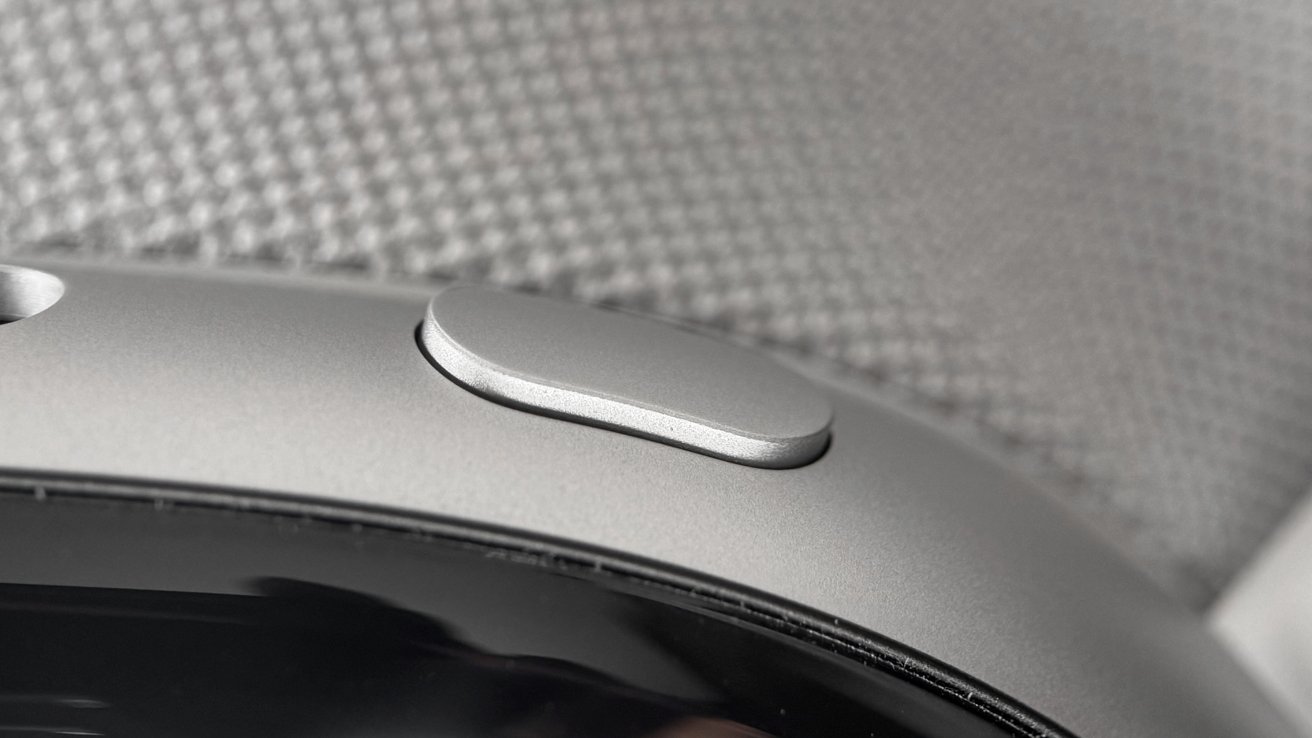 Apple Vision Pro review - the Top Button opens the camera interface
Apple Vision Pro review - the Top Button opens the camera interface
Spatial photos captured on Apple Vision Pro cameras are interesting, if not totally impressive. This is likely the part of the Apple Vision Pro hardware that will age the worst as new versions with improved capture capabilities are released.
Video recording from Apple Vision Pro is about as awkward as you expect. Pets don't like that your eyes are covered, so they tend to run. There's a cutoff age for children where the headset shifts from scary to interesting, but I haven't quite figured out where that line sits yet.
If you come into a space with Vision Pro on to record, expect the video to be a bunch of people pointing at you and asking what you're doing.
Spatial videos captured with the native cameras have much more impressive depth than what can be captured with iPhone 15 Pro. However, that depth is a trade-off for quality.
Capturing events, concerts, and loved ones with spatial video on an iPhone is ideal, even if the depth isn't as impressive. It still feels more immersive than a 2D video, though these 1080p 30Hz files will also age poorly.
Folks with a two-decade old Photos library experience this effect now. The pictures from the early- and mid-'00s are very clearly shot on old point-and-shoot digital cameras or early iPhones, with all that entails versus more modern gear. As the technology advances, this won't be much different.
Apple Vision Pro review -- What's missing
Apple Vision Pro and visionOS are new, even to Apple. While the company had more opportunities than external developers to work on the platform, time and resources were the enemy.
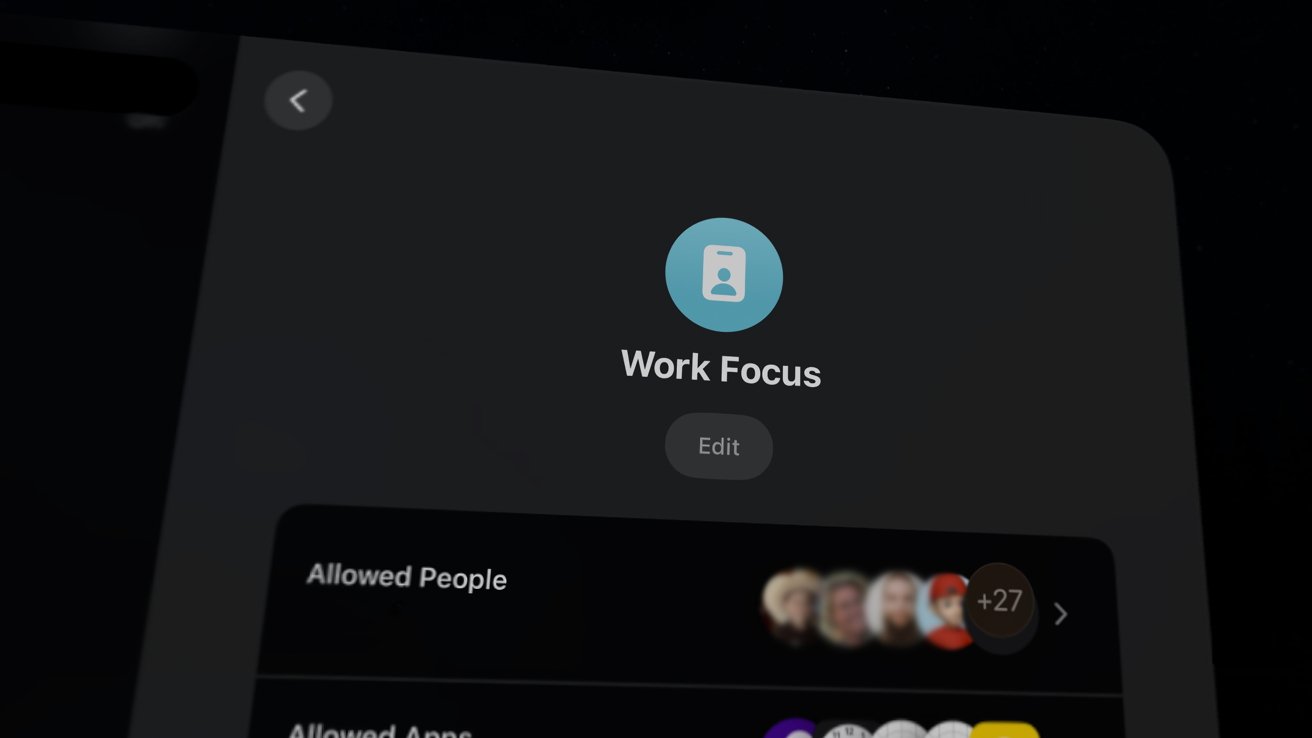
Apple Vision Pro review - Focus Modes lack Focus Filters
Many apps you'd find installed by default on an iPhone are nowhere to be found in visionOS. Of the ones that are available, only a few are native apps.
It is inevitable that apps like Pages and Podcasts will get native Apple Vision Pro apps, but when is the question. I'm hopeful it won't take another WWDC and visionOS 2.0 for more Apple native apps.
Several missing features affect how a user might work on Vision Pro. The lack of Focus Filters means email won't be filtered when you're in work mode, plus Profiles won't switch when opening Safari.
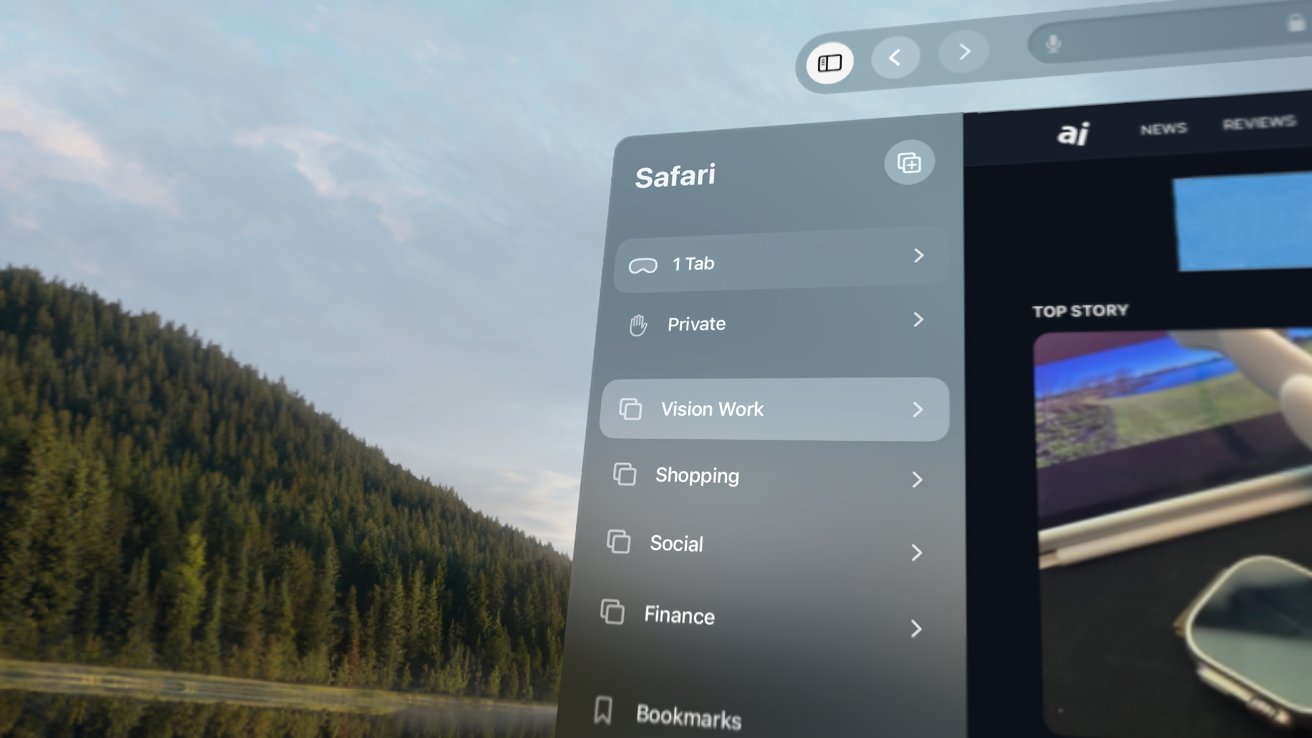
Apple Vision Pro review - Safari Profiles aren't available
Speaking of Safari Profiles, there aren't any. My Personal Profile is the only one available, and visionOS doesn't seem to have any knowledge about the other Profiles that exist.
To work from visionOS, I had to create new Tab Groups for work within my Personal Profile. It's a temporary solution until the feature comes to visionOS.
Apple's first-party apps aren't the only ones missing from visionOS. Many apps I rely upon to get my work done at AppleInsider aren't available.
The future isn't certain
Apple Vision Pro and visionOS are new platforms with infinite potential. Predicting where the technology will be in a month is easy, because there are beta versions of visionOS. There isn't any way to predict what the technology will look like in six months, or longer.
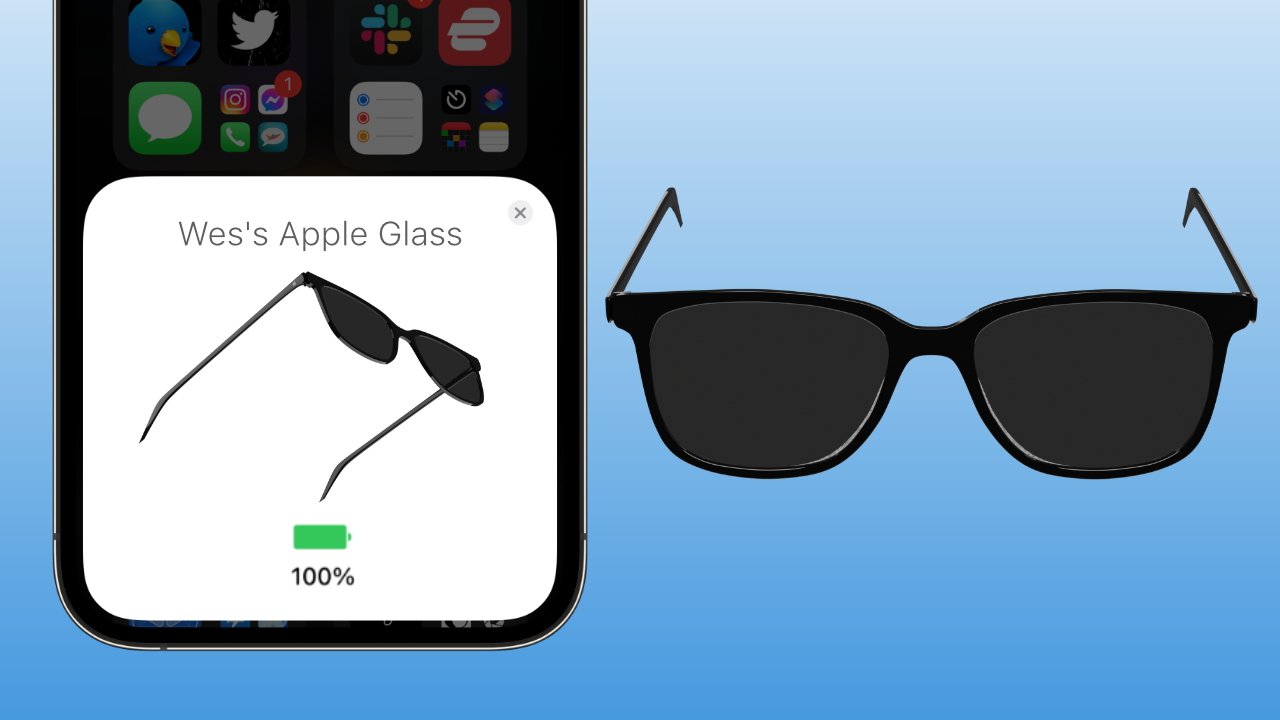
Apple Vision Pro review - ultimately, a slim glasses form factor is the goal
Things are going to evolve quickly now that the hardware is in the wild, even if it is only launched in the United States so far. Apple is learning about how users are using Apple Vision Pro, discovering new bugs to fix, and working on the next operating system release.
Developers are seeing their apps in visionOS for the first time. More apps are launching as native options every day.
I expect that within a year, Apple will have launched Apple Vision Pro globally, and most of the apps and experiences available on iPad will be released for visionOS. Early bugs and odd limitations will be eliminated with each update.
A spatial computing start
Apple Vision Pro is something different. It represents the first new computing platform for Apple since the iPad.
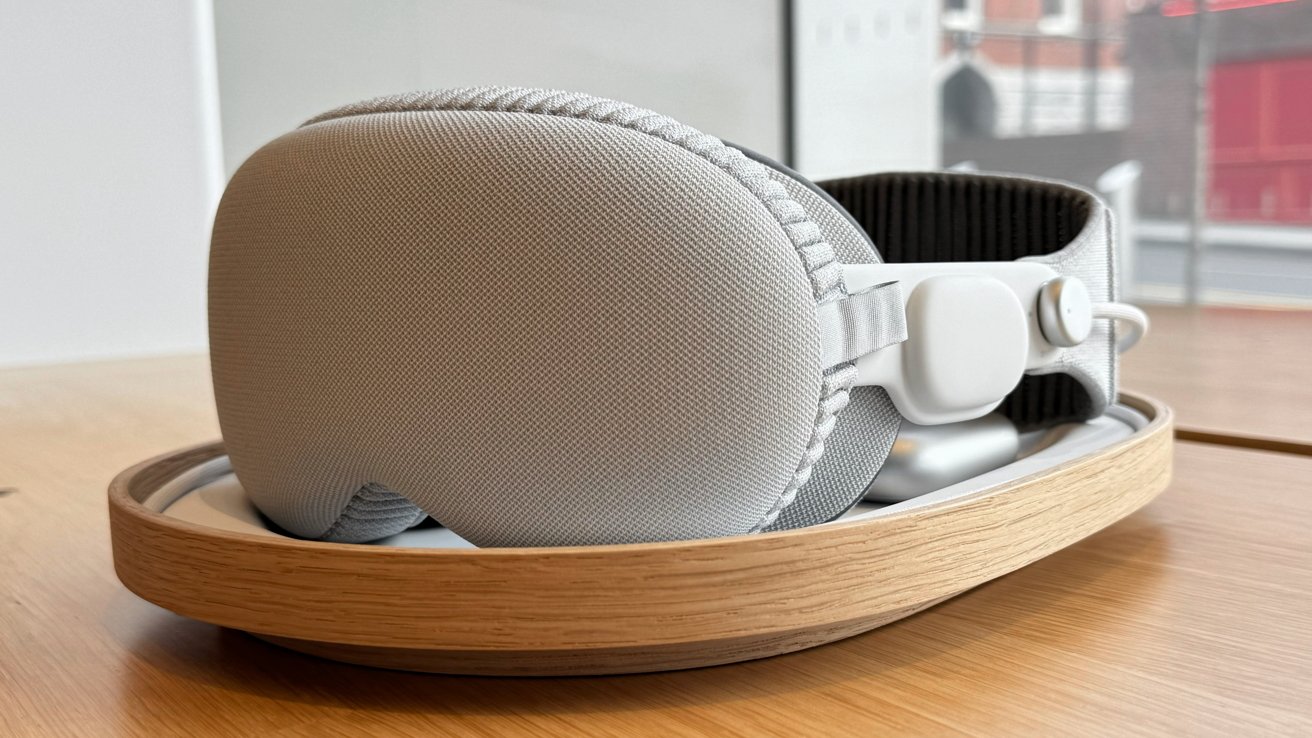
Apple Vision Pro review - ahead of the rest
It isn't the first of its kind, as most Apple products aren't, but it represents the best. Spatial computing may be a marketing term, but it does a good job of describing something that's virtual reality but feels like mixed reality in practice.
There's no telling when the Apple Vision Pro 2 or Vision SE will launch. This is the hardware we're stuck with, and if rumors are accurate, that won't change until 2026 at the earliest.
Apple Vision Pro represents the start of a new era, and software will have to run to catch up. The device's passthrough, hand tracking, eye tracking, and displays are already state of the art, so now it is time to see what developers can do with it.
I've written this entire review, edited the photos, and put everything in our publishing system from Apple Vision Pro. My entire shifts have been spent with the headset on since picking it up, and it seems possible that I'll be working with it on most days.
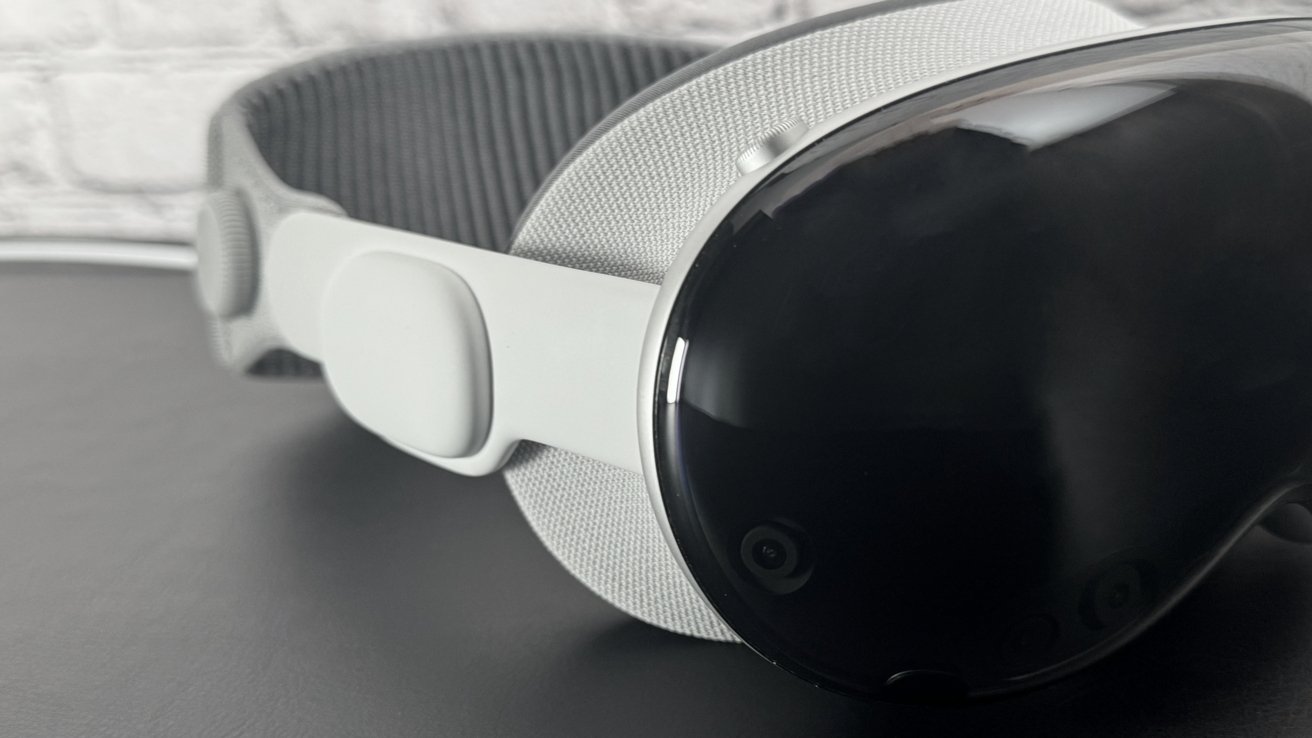
A new way to work
Spatial computing is still in its early days and not every app I need is available, but my MacBook Pro helps where visionOS fails. After years of working from iPad, then switching to a hybrid model with the 14-inch MacBook Pro, then coming back to iPad only with Stage Manager, it's time for another change.
It feels like every workflow I developed to work from iPad has set me up to work from Apple Vision Pro, and that's very compelling. Apple Vision Pro has proven to be an incredible product despite being a 1.0 and I can't wait to see where Apple takes it from here.
Like I said about 4000 words ago, this is the first of several reviews for Apple Vision Pro. And, keep an eye out for check-ins after major visionOS releases or milestones.
Apple Vision Pro review - Pros
- Incredibly sharp display with no screen door effect
- Unrivaled passthrough experience
- Eye tracking, hand tracking, and Optic ID make computing feel intuitive and invisible
- Easy to attach, exchange, and adjust accessories for a custom fit
- Integrating a Mac display within the visionOS view is something only Apple could pull off with such precision
- The culmination of Apple's vertical integration of software and hardware led to a device that feels transported from years in the future
Apple Vision Pro review - Cons
- Limited app selection at launch, especially native ones
- Front-heavy with limited band options that may not enable extended use for some
- Spaces need to be bright for best results with hand tracking and window placement
- MFi products required for best results as standard Bluetooth products "May affect Wi-Fi and Bluetooth connectivity"
- You're going to need a Bluetooth keyboard as the software one is subpar for anything more than quick text entry
- Personas lack customization after generation
- eyeSight is useful, but unsettling while Persona is in beta
- System-wide features available on iOS or macOS not present in visionOS, like Focus Filters or Safari Profiles
- Expensive for a consumer product with the same processing power as a $600 Mac mini
-- today. This is subject to change in the future.
As a platform, Apple Vision Pro is impossible to score right now. The culmination of pros and cons today, for the Apple enthusiast, lands at a 4 out of 5. It is a product that may represent the future of computing, but it has plenty of room for improvement, especially in the short term.
How to buy Apple Vision Pro
Ordering Apple Vision Pro isn't too dissimilar from buying any other Apple product, except it's only available from Apple online and physical retail at launch. Customers will need to have a few things ready to order, like their prescription, to ensure the ordering process goes smoothly.
Apple Vision Pro is available for purchase directly from Apple, and it starts at $3,499 with 256GB of storage. Upgrade the storage to 512GB or 1TB for $200 more at each tier. Optical inserts are $99 for readers and $149 for prescriptions.
Read on AppleInsider



Comments
2) Based on the patent and how I think that tech would evolve I'd expect the processing to be elsewhere, perhaps even in an iPhone, Watch, or some other wearable, with the data streaming to your lens, which means it's effectively a wireless display.
Thanks for the link. I had forgotten about this patent.
The problem with Apple is they just don't understand pricing - never have. They're so heck-bent on immediate profits, that they miss the big picture. They could have launched at $1,500 and immediately captured more market share, with significant stock jumps like Meta. The problem will always be the same with their bigger ticket items. Someone should tell them they can make money later on, soon after they get the headset on as many heads as humanly possible.
And now - here we go!!! You've got boneheads and other countries selling these things from $5K all the way up to $10K - which is a complete joke and actually an invitation for lawsuits and other legal issues. And it already started with Scammers scamming people... Get This! = I just stumbled on a blog about 3 imitation headsets built in China that do nothing more than cast iPhone screens onto the 2 screens inside the "headset". Your basic wireless Bluetooth/Airplay connections and Whammo! Scammed! Ouch. (The funny part is I hear Apple expected it - I mean Duh!) This is just the beginning.... Man oh Man!!!
I would have dropped this first launch at the $1,500 price point, get these things everywhere and watch my stock skyrocket. Instead, all they've done is drop a massive wall between the rich and poor, desperate and ignorant, and started us all down the road of TicketMaster-Resale battles, scams and madness. Go check out the stock price this morning? ... So in the tune of Nickelodeon? Dip, dip, dip, dip, da-dip, dip, dip.... Dip-I-told you-so!!!!
This model is very well polished for a 1.0 and I expect we'll see a leap when the 2.0 comes out in 2026/2027.
32" OLED 4K computer monitor = $1200 + tax
65" OLED 4K TV = $1300 + tax
Sonos Immersive speaker set with Atmos = $1356 + tax
$4656 + tax. People always respond to things like this by saying "it's only usable by one person" but that's irrelevant. Electronics aren't priced based on how may people are going to be using them. Price is the same regardless of one user or multiple users.
To write there are 600 native apps available and then say there are not enough is puzzling,
but not reviewing native apps seems like a missing section in this review.
Even if the reviewer does not use any of those app, I would say that as the part of the job of the reviewer
is to give use readers an insight what developers have been hard at work.
So yes, those developers who made the effort to port, I would say they also deserve a review.
Apple is a $3 trillion company.
Exit stage left, sir.
For many people this is probably the only way they could get to games. This is exciting. (potentially)
You include the original iPhone in both your list of building demand successes, and Apple pricing failures, which is frankly incoherent.
And most of the products you've listed were not products that they could have leveraged high demand for. The iPod Hi-Fi was not a loss leader, there were no supplemental sales to be had to make up the margin. Same with most of those computers. Sony make money on every Playstation 5 console, they price that in to their calculations, and even then they ultimately end up selling the console for a profit after the initial period. Apple don't make enough from App Store sales to make up a $2000 deficit on the original sale and would therefore need to support it with margins from other parts of the business. That's Meta's strategy, and it is massive risk madness.